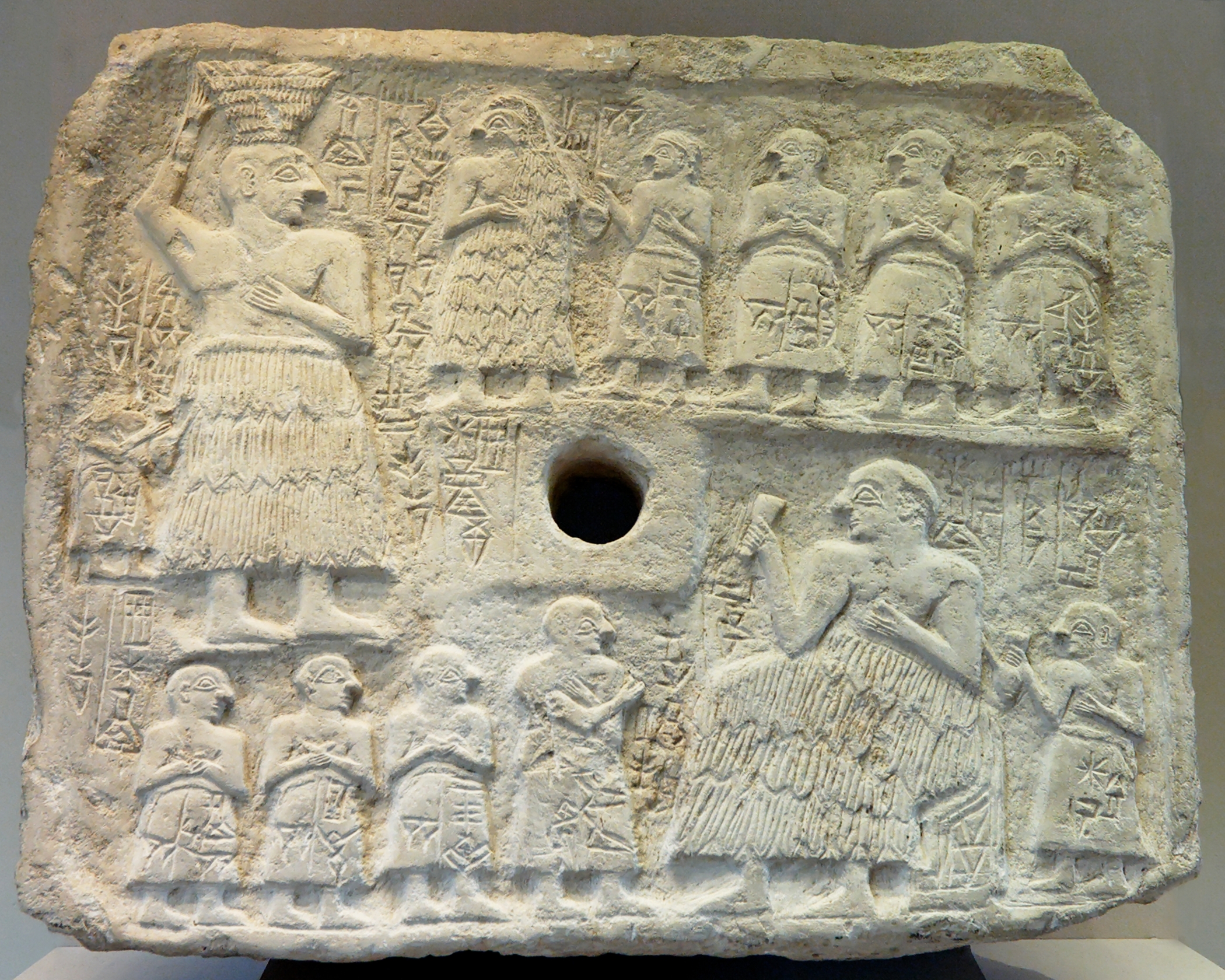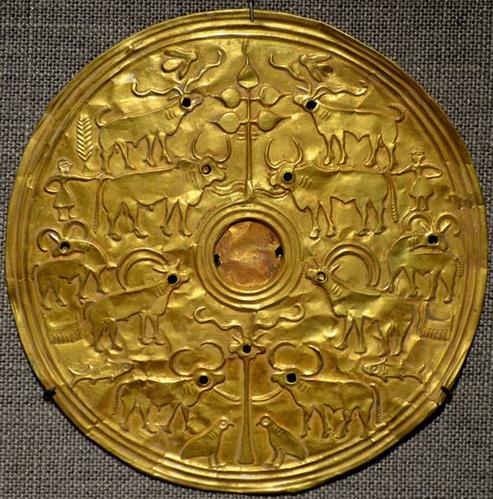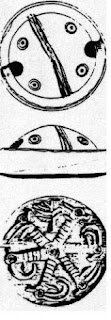Mirror: http://tinyurl.com/h2pzo85
![]()
Meluhha and Bronze Age revolution
Indus Script evidence validates maritime trade of Meluhha (Sarasvati civilization) with Dilmun from 2500 BCE.
A Maritime tin route from Hanoi to Haifa has been posited to transport tin which was a critical component to alloy with copper to sustain the Bronze Age revolution. On this route which predated Silk Road by two millennia, the Persian Gulf (Straits of Hormuz), together with the Straits of Malacca, was the critical maritime link. Archaeological reports on sites along the Persian Gulf have cumulatively evidenced the trade and cultural contacts Meluhha (Sarasvati civilization) merchants and artisans (some with settlements in Ancient Near East) had with Ancient Near East and Ancient Far East as active participants in the revolution. The presence of Munda in Austro-asiatic speaker areas of Ancient Far East is well-attested by Austro-asiatic etyma also present in glosses of Indian sprachbund (pace FBJ Kuiper on Munda words in Samskrtam).
![]()
Map of Bronze Age sites of eastern India and neighbouring areas: 1. Koldihwa; 2.Khairdih; 3. Chirand; 4. Mahisadal; 5. Pandu Rajar Dhibi; 6.Mehrgarh; 7. Harappa;8. Mohenjo-daro; 9.Ahar; 10. Kayatha; 11.Navdatoli; 12.Inamgaon; 13. Non PaWai; 14. Nong Nor;15. Ban Na Di andBan Chiang; 16. NonNok Tha; 17. Thanh Den; 18. Shizhaishan; 19. Ban Don Ta Phet [After Fig. 8.1 in: Charles Higham, 1996, The Bronze Age of Southeast Asia, Cambridge University Press].
![]()
Austroasiatic languages map (in German) from H.-J. Pinnow's Versuch einer historischen Lautlehre der Kharia-Sprache, 1958: map
The Gundestrup cauldron and Pillar of Boatmen are evidence of the Meluhhan contact areas in the Ancient NEar East. So are the hieroglyphs of frog, peacock, elephant, antelopes, heron on Dong Son bronze drums evidenc of the Meluhhan contact areas in the Tin Belt of the Globe in Ancient Far East.
Glyptic art of the Seals from Persian Gulf are a combination of Mesopotamian syles of cylinder seals combined with Indus Script hieroglyphs. Meluhhans had a flourishing tradw with Sumer ca. 2350 BCE. The inscriptions of Persian Gulf cylinder seald and also Dilmun-type stamp seals provide conclusive evidence for the presence of Meluhha merchants/artisans in the Persian Gulf and interacting with Ur and Susa. The trade transactions with Susa are attested by a Susa pot with the cargo of metal implements, tools, weapons. The decipherment of Indus Script hieroglyphs on the Susa pot as metalwork catalogues are presented in:See: http://bharatkalyan97.blogspot.in/2016/06/antithetical-antelopes-indus-script.html The hieroglyphs on the Kuwait Museum gold disc can be read rebus:1. A pair of tabernae montana flowers tagara 'tabernae montana' flower; rebus: tagara 'tin'
2. A pair of rams tagara 'ram'; rebus: damgar 'merchant' (Akkadian) Next to one ram: kuTi 'tree' Rebus: kuThi 'smelter' Alternative: kolmo 'rice plant' Rebus: kolimi 'smithy, forge'.
3. Ficus religiosa leaves on a tree branch (5) loa 'ficus leaf'; rebus: loh 'metal'. kol in Tamil means pancaloha'alloy of five metals'. PLUS flanking pair of lotus flowers: tAmarasa 'lotus' Rebus: tAmra 'copper' dula 'pair' Rebus: dul 'cast metal' thus, denoting copper castings.
4. A pair of bulls tethered to the tree branch: barad, barat 'ox' Rebus: bharata 'alloy of copper, pewter, tin' (Marathi) PLUS kola 'man' Rebus: kolhe 'smelter' kur.i 'woman' Rebus: kol 'working in iron' Alternative: ḍhangar 'bull'; rebus ḍhangar 'blacksmith' poLa 'zebu' Rebus: poLa 'magnetite'.
Two persons touch the two bulls: meḍ ‘body’ (Mu.) Rebus: meḍ ‘iron’ (Ho.) Thus, the hieroglyph composition denotes ironsmiths.
5. A pair of antelopes looking back: krammara 'look back'; rebus: kamar 'smith' (Santali); tagara 'antelope'; rebus: damgar 'merchant' (Akkadian) Alternative: melh, mr..eka 'goat' (Brahui. Telugu) Rebus: milakkhu 'copper' (Pali), mleccha-mukha 'copper' (Samskritam)
6. A pair of antelopes mē̃ḍh 'antelope, ram'; rebus: mē̃ḍ 'iron' (Mu.)
7. A pair of combs kāṅga 'comb' Rebus: kanga 'brazier, fireplace'
Phal. kāṅga ʻ combing ʼ in ṣiṣ k° dūm ʻI comb my hairʼ khyḗṅgia, kēṅgī f.;
kaṅghā m. ʻ large comb (Punjabi) káṅkata m. ʻ comb ʼ AV., n. lex., °tī -- , °tikã -- f. lex. 2. *kaṅkaṭa -- 2. 3. *kaṅkaśa -- . [Of doubtful IE. origin WP i 335, EWA i 137: aberrant -- uta -- as well as -- aśa -- replacing -- ata -- in MIA. and NIA.]1. Pk. kaṁkaya -- m. ʻ comb ʼ, kaṁkaya -- , °kaï -- m. ʻ name of a tree ʼ; Gy. eur. kangli f.; Wg. kuṇi -- přũ ʻ man's comb ʼ (for kuṇi -- cf. kuṇälík beside kuṅälíks.v. kr̥muka -- ; -- přũ see prapavaṇa -- ); Bshk. kēṅg ʻ comb ʼ, Gaw. khēṅgīˊ, Sv. khḗṅgiā, Tor. kyäṅg ʻ comb ʼ (Dard. forms, esp. Gaw., Sv., Phal. but not Sh., prob. ← L. P. type < *kaṅgahiā -- , see 3 below); Sh. kōṅyi̯ f. (→ Ḍ. k*lṅi f.), gil. (Lor.) kōĩ f. ʻ man's comb ʼ, kōũ m. ʻ woman's comb ʼ, pales. kōgō m. ʻ comb ʼ; K. kanguwu m. ʻ man's comb ʼ, kangañ f. ʻ woman's ʼ; WPah. bhad. kãˊkei ʻ a comb -- like fern ʼ, bhal. kãkei f. ʻ comb, plant with comb -- like leaves ʼ; N. kāṅiyo, kāĩyo ʻ comb ʼ, A. kã̄kai, B. kã̄kui; Or. kaṅkāi, kaṅkuā ʻ comb ʼ, kakuā ʻ ladder -- like bier for carrying corpse to the burning -- ghat ʼ; Bi. kakwā ʻ comb ʼ, kakahā, °hī, Mth. kakwā, Aw. lakh. kakawā, Bhoj. kakahī f.; H. kakaiyā ʻ shaped like a comb (of a brick) ʼ; G. (non -- Aryan tribes of Dharampur)kākhāī f. ʻ comb ʼ; M. kaṅkvā m. ʻ comb ʼ, kã̄kaī f. ʻ a partic. shell fish and its shell ʼ; -- S. kaṅgu m. ʻ a partic. kind of small fish ʼ < *kaṅkuta -- ? -- Ext. with --l -- in Ku. kã̄gilo, kāĩlo ʻ comb ʼ.2. G. (Soraṭh) kã̄gaṛ m. ʻ a weaver's instrument ʼ?3. L. kaṅghī f. ʻ comb, a fish of the perch family ʼ, awāṇ. kaghī ʻ comb ʼ; P. kaṅghā m. ʻ large comb ʼ, °ghī f. ʻ small comb for men, large one for women ʼ (→ H. kaṅghā m. ʻ man's comb ʼ, °gahī, °ghī f. ʻ woman's ʼ, kaṅghuā m. ʻ rake or harrow ʼ; Bi. kãgahī ʻ comb ʼ, Or. kaṅgei, M. kaṅgvā); -- G. kã̄gsī f. ʻ comb ʼ, with metath. kã̄sko m., °kī f.; WPah. khaś. kāgśī, śeu. kāśkī ʻ a comblike fern ʼ or < *kaṅkataśikha -- .WPah.kṭg. kaṅgi f. ʻ comb ʼ; J. kāṅgṛu m. ʻ small comb ʼ.(CDIAL 2598)
Rebus: large furnace, fireplace: kang कंग् । आवसथ्यो &1;ग्निः m. the fire-receptacle or fire-place, kept burning in former times in the courtyard of a Kāshmīrī house for the benefit of guests, etc., and distinct from the three religious domestic fires of a Hindū; (at the present day) a fire-place or brazier lit in the open air on mountain sides, etc., for the sake of warmth or for keeping off wild beasts. nāra-kang, a fire-receptacle; hence, met. a shower of sparks (falling on a person) (Rām. 182). kan:gar `portable furnace' (Kashmiri)Cf. kã̄gürü, which is the fem. of this word in a dim. sense (Gr.Gr. 33, 7). kã̄gürü काँग्् or
kã̄gürü काँग or kã̄gar काँग््र्् । हसब्तिका f. (sg. dat. kã̄grĕ काँग्र्य or kã̄garĕ काँगर्य, abl. kã̄gri काँग्रि), the portable brazier, or kāngrī, much used in Kashmīr (K.Pr. kángár, 129, 131, 178; káṅgrí, 5, 128, 129). For particulars see El. s.v. kángri; L. 7, 25, kangar;and K.Pr. 129. The word is a fem. dim. of kang, q.v. (Gr.Gr. 37). kã̄gri-khŏphürükã̄gri-khŏphürü काँग्रि-ख्वफ््&above;रू&below; । भग्ना काष्ठाङ्गारिका f. a worn-out brazier. -khôru -खोरु&below; । काष्ठाङ्गारिका<-> र्धभागः m. the outer half (made of woven twigs) of a brazier, remaining after the inner earthenware bowl has been broken or removed; see khôru. -kŏnḍolu -क्वंड । हसन्तिकापात्रम् m. the circular earthenware bowl of a brazier, which contains the burning fuel. -köñü -का&above;ञू&below; । हसन्तिकालता f. the covering of woven twigs outside the earthenware bowl of a brazier.
It is an archaeometallurgical challenge to trace the Maritime Tin Route from the tin belt of the world on Mekong River delta in the Far East and trace the contributions made by seafaring merchants of Meluhha in reaching the tin mineral resource to sustain the Tin-Bronze Age which was a revolution unleashed ca. 5th millennium BCE. See: http://bharatkalyan97.blogspot.in/2015/08/indus-script-corpora-as-catalogus.html
8. A pair of fishes ayo 'fish' (Mu.); rebus: ayo 'metal, iron' (Gujarati); ayas 'metal' (Sanskrit)
9.A pair of buffaloes tethered to a post-standard kāṛā ‘buffalo’ கண்டி kaṇṭi buffalo bull (Tamil); rebus: kaṇḍ 'stone ore'; kāṇḍa ‘tools, pots and pans and metal-ware’; kaṇḍ ‘furnace, fire-altar, consecrated fire’.
10. A pair of birds Rebus 1: kōḍi. [Tel.] n. A fowl, a bird. (Telugu) Rebus: khōṭ ‘alloyed ingots’. Rebus 2: kol ‘the name of a bird, the Indian cuckoo’ (Santali) kol 'iron, smithy, forge'. Rebus 3: baṭa = quail (Santali) Rebus: baṭa = furnace, kiln (Santali) bhrāṣṭra = furnace (Skt.) baṭa = a kind of iron (G.) bhaṭa ‘furnace’ (Gujarati)
11. The buffaloes, birds flank a post-standard with curved horns on top of a stylized 'eye' PLUS 'eyebrows' with one-horn on either side of two faces
![]() mũh ‘face’; rebus: mũh ‘ingot’ (Mu.)
mũh ‘face’; rebus: mũh ‘ingot’ (Mu.)
ṭhaṭera ‘buffalo horns’. ṭhaṭerā ‘brass worker’ (Punjabi)
Pe. kaṇga (pl. -ŋ, kaṇku) eye. Rebus: kanga ' large portable brazier, fire-place' (Kashmiri).
Thus the stylized standard is read rebus: Hieroglyph components:kanga + ṭhaṭerā 'one eye + buffalo horn' Rebus: kanga 'large portable barzier' (Kashmiri) + ṭhaṭerā ‘brass worker’ (Punjabi)
Ta. kaṇ eye, aperture, orifice, star of a peacock's tail. Ma. kaṇ, kaṇṇu eye, nipple, star in peacock's tail, bud. Ko. kaṇ eye. To. koṇ eye, loop in string.Ka. kaṇ eye, small hole, orifice. Koḍ. kaṇṇï id. Tu. kaṇṇů eye, nipple, star in peacock's feather, rent, tear. Te. kanu, kannu eye, small hole, orifice, mesh of net, eye in peacock's feather. Kol. kan (pl. kanḍl) eye, small hole in ground, cave. Nk. kan (pl. kanḍḷ) eye, spot in peacock's tail. Nk. (Ch.) kan (pl. -l) eye. Pa.(S. only) kan (pl. kanul) eye. Ga. (Oll.) kaṇ (pl. kaṇkul) id.; kaṇul maṭṭa eyebrow; kaṇa (pl. kaṇul) hole; (S.) kanu (pl. kankul) eye. Go. (Tr.) kan (pl.kank) id.; (A.) kaṛ (pl. kaṛk) id. Konḍa kaṇ id. Pe. kaṇga (pl. -ŋ, kaṇku) id. Manḍ. kan (pl. -ke) id. Kui kanu (pl. kan-ga), (K.) kanu (pl. kaṛka) id. Kuwi(F.) kannū (pl. kar&nangle;ka), (S.) kannu (pl. kanka), (Su. P. Isr.) kanu (pl. kaṇka) id. Kur. xann eye, eye of tuber; xannērnā (of newly born babies or animals) to begin to see, have the use of one's eyesight (for ērnā, see 903). Malt. qanu eye. Br. xan id., bud. (DEDR 1159) kāṇá ʻ one -- eyed ʼ RV. Pa. Pk. kāṇa -- ʻ blind of one eye, blind ʼ; Ash. kã̄ṛa, °ṛī f. ʻ blind ʼ, Kt. kãŕ, Wg. kŕãmacrdotdot;, Pr. k&schwatildemacr;, Tir. kāˊna, Kho. kāṇu NTS ii 260,kánu BelvalkarVol 91; K. kônu ʻ one -- eyed ʼ, S. kāṇo, L. P. kāṇã̄; WPah. rudh. śeu. kāṇā ʻ blind ʼ; Ku. kāṇo, gng. kã̄&rtodtilde; ʻ blind of one eye ʼ, N. kānu;A. kanā ʻ blind ʼ; B. kāṇā ʻ one -- eyed, blind ʼ; Or. kaṇā, f. kāṇī ʻ one -- eyed ʼ, Mth. kān, °nā, kanahā, Bhoj. kān, f. °ni, kanwā m. ʻ one -- eyed man ʼ, H. kān,°nā, G. kāṇũ; M. kāṇā ʻ one -- eyed, squint -- eyed ʼ; Si. kaṇa ʻ one -- eyed, blind ʼ. -- Pk. kāṇa -- ʻ full of holes ʼ, G. kāṇũ ʻ full of holes ʼ, n. ʻ hole ʼ (< ʻ empty eyehole ʼ? Cf. ã̄dhḷũ n. ʻ hole ʼ < andhala -- ).S.kcch. kāṇī f.adj. ʻ one -- eyed ʼ; WPah.kṭg. kaṇɔ ʻ blind in one eye ʼ, J. kāṇā; Md. kanu ʻ blind ʼ.(CDIAL 3019) Ko. kāṇso ʻ squint -- eyed ʼ.(Konkani)
Paš. ainċ -- gánik ʻ eyelid ʼ(CDIAL 3999) Phonetic reinforcement of the gloss: Pe. kaṇga (pl. -ŋ, kaṇku) eye.
See also: nimišta kanag 'to write' (SBal): *nipēśayati ʻ writes ʼ. [√piś] Very doubtful: Kal.rumb. Kho. nivḗš -- ʻ to write ʼ more prob. ← EPers. Morgenstierne BSOS viii 659. <-> Ir. pres. st. *nipaiš -- (for *nipais -- after past *nipišta -- ) in Yid. nuviš -- , Mj. nuvuš -- , Sang. Wkh. nəviš -- ; -- Aś. nipista<-> ← Ir. *nipista -- (for *nipišta -- after pres. *nipais -- ) in SBal. novīsta or nimišta kanag ʻ to write ʼ.(CDIAL 7220)
Alternative: dol ‘eye’; Rebus: dul ‘to cast metal in a mould’ (Santali)Alternative: kandi ‘hole, opening’ (Ka.)[Note the eye shown as a dotted circle on many Dilmun seals.]; kan ‘eye’ (Ka.); rebus: kandi (pl. –l) necklace, beads (Pa.);kaṇḍ 'stone ore' Alternative: kã̄gsī f. ʻcombʼ (Gujarati); rebus 1: kangar ‘portable furnace’ (Kashmiri); rebus 2: kamsa 'bronze'.
khuṇḍ ʻtethering peg or post' (Western Pahari) Rebus: kūṭa ‘workshop’; kuṭi= smelter furnace (Santali); Rebus 2: kuṇḍ 'fire-altar'
Why are animals shown in pairs?
dula ‘pair’ (Kashmiri); rebus: dul ‘cast metal’ (Mu.)
Thus, all the hieroglyphs on the gold disc can be read as Indus writing related to one bronze-age artifact category: metalware catalog entries.
![]() kondh ‘young bull’. kũdār ‘turner, brass-worker’. sangaDa 'lathe, brazier' rebus: sangAta 'collection' (of metalwork) koTiya 'rings on neck' rebus: kotiya 'baghlah dhow, cargo boat'. कुटिल kuṭila, katthīl = bronze (8 parts copperand 2 parts tin) dATu ‘cross’ rebus: dhAtu ‘mineral’ gaNDa ‘four’ rebus: kaNDa ‘implements’ dula ‘two’ rebus: dul ‘metal casting’ ayo, aya ‘fish’ rebus: aya ‘iron’ ayas ‘metal’ aya ‘fish’ rebus: ayas ‘metal’ PLUS adaren ‘lid’ rebus: aduru ‘unsmelted metal’ kolmo ‘rice plant’ rebus: kolimi ‘smithy, forge’ muh ‘ingot’ kolom ‘three’ rebus: kolimi ‘smithy, forge’ dula ‘two’ rebus: dul ‘metal casting’ ranku ‘liquid measure’ rebus: ranku ‘tin’ kolmo ‘rice plant’ rebus: kolimi ‘smithy, forge’ karNaka, kanka ‘rim of jar’ rebus: karNI ‘supercargo, engraver, account’.
kondh ‘young bull’. kũdār ‘turner, brass-worker’. sangaDa 'lathe, brazier' rebus: sangAta 'collection' (of metalwork) koTiya 'rings on neck' rebus: kotiya 'baghlah dhow, cargo boat'. कुटिल kuṭila, katthīl = bronze (8 parts copperand 2 parts tin) dATu ‘cross’ rebus: dhAtu ‘mineral’ gaNDa ‘four’ rebus: kaNDa ‘implements’ dula ‘two’ rebus: dul ‘metal casting’ ayo, aya ‘fish’ rebus: aya ‘iron’ ayas ‘metal’ aya ‘fish’ rebus: ayas ‘metal’ PLUS adaren ‘lid’ rebus: aduru ‘unsmelted metal’ kolmo ‘rice plant’ rebus: kolimi ‘smithy, forge’ muh ‘ingot’ kolom ‘three’ rebus: kolimi ‘smithy, forge’ dula ‘two’ rebus: dul ‘metal casting’ ranku ‘liquid measure’ rebus: ranku ‘tin’ kolmo ‘rice plant’ rebus: kolimi ‘smithy, forge’ karNaka, kanka ‘rim of jar’ rebus: karNI ‘supercargo, engraver, account’.
See: https://www.academia.edu/1898205/Potts_2010_-_Cylinder_seals_and_their_use_in_the_Arabian_Peninsula_AAE_21_ DT Potts, 2010 Cylnder seals and their use in Arabian Peninsula. After presenting the following figures of cylinder seals, DT Potts concludes:
"In conclusion, the number of seals discovered in eastern Arabia comes nowhere near the thousands known further north in the cuneiform-using heartland of the ancient Near East. Nevertheless, the apparent dearth of cylinder seals in the region is itself a relative estimation. Compared with the Indus Valley, eastern Iran, Central Asia and the Bronze Age Caucasus, the numbers are not insignificant. There is, however, a very clear fall-off in seal numbers...
![]()
![]()
![]()
koThAri 'crucible' Rebus: koThAri 'treasurer, warehouse' . मेढ (p. 662) [ mēḍha ] 'polar' star' Rebus: mẽṛhẽt, meḍ 'iron' (Ho.Munda)
मेढ (p. 662) [ mēḍha ] 'polar' star' Rebus: mẽṛhẽt, meḍ 'iron' (Ho.Munda)
kola 'tiger' rebus: kol 'working in iron' mlekh 'goat' rebus:milakkhu 'copper' barad, balad 'ox' rebus: bharat 'alloy of copper, pewter, tin'
Fig. 6c offering table with hooves grasped/touched by bull-men or humans
Fig. 6e table grasped/touched by monkeys
Fig. 6a-e symbols/objects apparently placed on the table
Fig. 6a,c table apparently placed on a ‘podium’
कर्णक kárṇaka, kannā 'legs spread', 'rim of jar', 'pericarp of lotus' karaṇī 'scribe, supercargo', kañi-āra 'helmsman'.kanḍo stool, seat. (DEDR 1179) Rebus: kaṇḍ 'fire-altar' (Santali) kāṇḍa 'tools, pots and pans and metal-ware'
![]() Fig. 5a-f bull-man holding/touching a ‘ritual’ object or a branch; Fig 5c, d bull-man standing ‘above’ an animal; Fig. 5a-f : bull-man holding/touching a ‘ritual’ object or a branch
Fig. 5a-f bull-man holding/touching a ‘ritual’ object or a branch; Fig 5c, d bull-man standing ‘above’ an animal; Fig. 5a-f : bull-man holding/touching a ‘ritual’ object or a branch koThAri 'crucible' Rebus: koThAri 'treasurer, warehouse' . मेढ (p. 662) [ mēḍha ] 'polar' star' Rebus: mẽṛhẽt, meḍ 'iron' (Ho.M
करडूं or करडें (p. 137) [ karaḍū or ṅkaraḍēṃ ] n A kid. कराडूं (p. 137) [ karāḍūṃ ] n (Commonly करडूं) A kid. (Marathi) Rebus: करडा (p. 137) [ karaḍā ] Hard from alloy--iron, silver &c. (Marathi) khaNDa 'divisions' Rebus: khANDa 'implements'
![]() Fig. 4a b
Fig. 4a bull-man standing on a hatched podium Fig. 4b, f bull-man holding/touching a ‘ritual’ object or a branch; Fig. 4a, c-d bull-man grasping an animal; Fig. 4b : bull-man holding/touching a ‘ritual’ object or a branch
karaDi 'safflower' Rebus: karaDa 'hard alloy' (Marathi); khaNDa 'divisions' Rebus: khANDa 'implements' koThAri 'crucible' Rebus: koThAri 'treasurer, warehouse' . मेढ (p. 662) [ mēḍha ] 'polar' star' Rebus: mẽṛhẽt, meḍ 'iron' (Ho.M
![]() Fig. 3a Features: god with a naked or garbed attendant behind or before; god holding/touching a crescent-standard; bull-man holding/touching a ‘ritual’ object or a branch Fig. 3b bull-man grasped/touched by a naked male figure Fig. 3b-f bull-man grasping an animal; Fig. 3d bull-man standing ‘above’ an animal; Fig. 3a : bull-man holding/touching a ‘ritual’ object or a branch
Fig. 3a Features: god with a naked or garbed attendant behind or before; god holding/touching a crescent-standard; bull-man holding/touching a ‘ritual’ object or a branch Fig. 3b bull-man grasped/touched by a naked male figure Fig. 3b-f bull-man grasping an animal; Fig. 3d bull-man standing ‘above’ an animal; Fig. 3a : bull-man holding/touching a ‘ritual’ object or a branch करडूं or करडें (p. 137) [ karaḍū or ṅkaraḍēṃ ] n A kid. कराडूं (p. 137) [ karāḍūṃ ] n (Commonly करडूं) A kid. (Marathi) Rebus: करडा (p. 137) [ karaḍā ] Hard from alloy--iron, silver &c. (Marathi)
![]() Fig. 2 e-f god with a naked or garbed attendant behind or before; Fig. 2c-d god grasping/touching a gazelle
Fig. 2 e-f god with a naked or garbed attendant behind or before; Fig. 2c-d god grasping/touching a gazelle करडूं or करडें (p. 137) [ karaḍū or ṅkaraḍēṃ ] n A kid. कराडूं (p. 137) [ karāḍūṃ ] n (Commonly करडूं) A kid. (Marathi) Rebus: करडा (p. 137) [ karaḍā ] Hard from alloy--iron, silver &c. (Marathi) dula 'pair' rebus: dul 'metal casting'
![]() Features Fig. 1c-f: god with a naked or garbed attendant behind or before; Fig. 1d-e god seated on a stool/throne ‘above’ a bull; Fig. 1a-f god drinking through a tube leading to a jar; god holding a cup
Features Fig. 1c-f: god with a naked or garbed attendant behind or before; Fig. 1d-e god seated on a stool/throne ‘above’ a bull; Fig. 1a-f god drinking through a tube leading to a jar; god holding a cup
barad, balad, 'ox' rebus: bharat 'alloy of pewter, copper, tin'
meṭ sole of foot, footstep, footprint (Ko.); meṭṭu step, stair, treading, slipper (Te.)(DEDR 1557). dula ‘pair’.
Rebus: dul 'metal casting'
Rebus: meḍ ‘iron’ (Ho.) dul meṛed, cast iron (Mu.) mẽṛhẽt baṭi = iron (Ore) furnaces (Santali)
kuDi 'drink' rebus: kuThi 'smelter' khaNDa 'water' rebus: khaNDa 'implements'
“Recent excavations on the island of Bahrain have uncovered a seal impression similar to a stamped seal tablet in the Yale Babylonian Collection. This Yale impression is dated to the tenth year of Gungunum, King of Larsa, in southern Babylonia – that is 1923 BCE. The Bahrain seal was found in a Barbar culture level, partially contemporary with the Umm an-Nar culture of Oman, which can in turn be paralled at Bampur V with the incised ware (‘hut-pot’) motifs. The general evidence, thus, points to a date c. 1900 BCE for the terminus of the Bampur sequence, and for the date of the Kurab shaft-hole pick-axe.” (Lamberg-Karlovsky, GC, 1969, Further Notes on the Shaft Hole Pick Axe From Khurab MakranIran, Vol. 7, 1969, pp 163-164) http://www.jstor.org/stable/4299621 .British Institute of Persian Studies
https://www.scribd.com/doc/315224554/Further-Notes-on-the-Shaft-Hole-Pick-Axe-From-Khurab-Makran-G-C-Lamberg-Karlovsky-Year-1969
Many sites on the Gulf of Khambat, and the site of Lothal evidence that the Sarasvati civilization was involved in trade through the Persian Gulf and beyond through Tigris-Euphrates upto Haifa, Israel in Ancient Near East.
![]() This is a remarkable square seal from Ur, with cuneiform script together with a bison/bull/ox hieroglyph. This may be called Gadd Seal 1 of Ur since this was the first item on the Plates of figures included in Gadd's paper. Assigned to the pre-Sargonic period, this is perhaps a seal of a Meluhha (Indus) merchant. Gadd lists 18 seals from Ur and sites in Babylonia, witn Indus-type writing system. Gadd Seal No. 2 is of circular shape with a button boss, perhaps of Persian Gulf origin (perhaps belongs to a Meluhha merchant in Bahrain). This seal plus seal nos. 3,4,5,15,16,17 have Indus script motifs and hieroglyphs. Seal no. 6 is cylindrical and Sumerian with hieroglyphs of zebu, scorpion, and other Indus Script hieroglyphs. Seal no. 7 has kuTi, 'tree' Indus Script hieroglyph (which signifies rebus kuThi 'smelter'). Seal no. 8 is Sumerian and perhaps relates to a Bahrain merchant who holds a goat (mlekh 'goat' rebus: milakkhu 'copper'), an Indus script hieroglyph. Seals 9,10,11, 12,13,14 are perhaps from Bahrain of a Meluhha merchant. Seal no. 15 was found with carnelian, steatite and copper beads in a Sargonid period grave, and is a Persian Gulf seal attributable to contacts with Sarasvati riverbasin (Gujarat carnelian in particular). Seal No. 16,17,18 are clearly those of Meluhha merchants in Bahrain. Seals found at Kish, Gawra and Asmar are of Indus Script corpora. Briggs Buchanan assigns Seal nos. 2,3,4,5 and 16 to Indus seal type I, a type which includes circular seals but with Indus script on the obverse. Seal no. 15 is categorised in type II as a crude Indus script imitation while seal no. 16 is categorised in type III as Persian Gulf Bahrain seal of the type found in Lothal and also Failaka. This tablet assigned to 10th year of Gungunum of Larsa (1923 BCE) is stamped by an Indus Script seal of type III in Buchanan classification of Persian Gulf seals.
This is a remarkable square seal from Ur, with cuneiform script together with a bison/bull/ox hieroglyph. This may be called Gadd Seal 1 of Ur since this was the first item on the Plates of figures included in Gadd's paper. Assigned to the pre-Sargonic period, this is perhaps a seal of a Meluhha (Indus) merchant. Gadd lists 18 seals from Ur and sites in Babylonia, witn Indus-type writing system. Gadd Seal No. 2 is of circular shape with a button boss, perhaps of Persian Gulf origin (perhaps belongs to a Meluhha merchant in Bahrain). This seal plus seal nos. 3,4,5,15,16,17 have Indus script motifs and hieroglyphs. Seal no. 6 is cylindrical and Sumerian with hieroglyphs of zebu, scorpion, and other Indus Script hieroglyphs. Seal no. 7 has kuTi, 'tree' Indus Script hieroglyph (which signifies rebus kuThi 'smelter'). Seal no. 8 is Sumerian and perhaps relates to a Bahrain merchant who holds a goat (mlekh 'goat' rebus: milakkhu 'copper'), an Indus script hieroglyph. Seals 9,10,11, 12,13,14 are perhaps from Bahrain of a Meluhha merchant. Seal no. 15 was found with carnelian, steatite and copper beads in a Sargonid period grave, and is a Persian Gulf seal attributable to contacts with Sarasvati riverbasin (Gujarat carnelian in particular). Seal No. 16,17,18 are clearly those of Meluhha merchants in Bahrain. Seals found at Kish, Gawra and Asmar are of Indus Script corpora. Briggs Buchanan assigns Seal nos. 2,3,4,5 and 16 to Indus seal type I, a type which includes circular seals but with Indus script on the obverse. Seal no. 15 is categorised in type II as a crude Indus script imitation while seal no. 16 is categorised in type III as Persian Gulf Bahrain seal of the type found in Lothal and also Failaka. This tablet assigned to 10th year of Gungunum of Larsa (1923 BCE) is stamped by an Indus Script seal of type III in Buchanan classification of Persian Gulf seals.
m417 Glyph: ‘ladder’: H. sainī, senī f. ʻ ladder ʼ Rebus: Pa. sēṇi -- f. ʻ guild, division of army ʼ; Pk. sēṇi -- f. ʻ row, collection ʼ; śrḗṇi (metr. often śrayaṇi -- ) f. ʻ line, row, troop ʼ RV. The lexeme in Tamil means: Limit, boundary; எல்லை. நளியிரு முந்நீரேணி யாக (புறநா. 35, 1). Country, territory.
Hieroglyph: *śrētrī ʻ ladder ʼ. [Cf. śrētr̥ -- ʻ one who has recourse to ʼ MBh. -- See śrití -- . -- √śri]Ash. ċeitr ʻ ladder ʼ (< *ċaitr -- dissim. from ċraitr -- ?).(CDIAL 12720)*śrēṣṭrī2 ʻ line, ladder ʼ. [For mng. ʻ line ʼ conn. with √śriṣ2 cf. śrḗṇi -- ~ √śri. -- See śrití -- . -- √śriṣ2]
Pk. sēḍhĭ̄ -- f. ʻ line, row ʼ (cf. pasēḍhi -- f. ʻ id. ʼ. -- < EMIA. *sēṭhī -- sanskritized as śrēḍhī -- , śrēṭī -- , śrēḍī<-> (Col.), śrēdhī -- (W.) f. ʻ a partic. progression of arithmetical figures ʼ); K. hēr, dat. °ri f. ʻ ladder ʼ.(CDIAL 12724) rebus: Seṭṭhi [fr. seṭṭha, Sk. śreṣṭhin] foreman of a guild, treasurer, banker, "City man", wealthy merchant Vin i.15 sq., 271 sq.; ii.110 sq., 157; S i.89; J i.122;ii.367 etc.; Rājagaha˚ the merchant of Rājagaha Vin ii.154; J iv.37; Bārāṇasi˚ the merchant of Benares J i.242, 269; jana -- pada -- seṭṭhi a commercial man of the country J iv.37; seṭṭhi gahapati Vin i.273; S i.92; there were families of seṭṭhis Vin i.18; J iv.62; ˚ -- ṭṭhāna the position of a seṭṭhi J ii.122, 231; hereditary J i.231, 243; ii.64; iii.475; iv.62 etc.; seṭṭhânuseṭṭhī treasurers and under -- treasurers Vin i.18; see Vinaya Texts i.102.
Seṭṭhitta
Seṭṭhitta (nt.) [abstr. fr. seṭṭhi] the office of treasurer or (wholesale) merchant S i.92.
The glyphics are:
Semantics: ‘group of animals/quadrupeds’: paśu ‘animal’ (RV), pasaramu, pasalamu = an animal, a beast, a brute, quadruped (Te.) Rebus: pasra ‘smithy’ (Santali)
Glyph: ‘six’: bhaṭa ‘six’. Rebus: bhaṭa ‘furnace’.
Glyph (the only inscription on the Mohenjo-daro seal m417): ‘warrior’: bhaṭa. Rebus: bhaṭa ‘furnace’. Thus, this glyph is a semantic determinant of the message: ‘furnace’. It appears that the six heads of ‘animal’ glyphs are related to ‘furnace’ work. This guild, community of smiths and masons evolves into Harosheth Hagoyim, ‘a smithy of nations’.
It appears that the Meluhhans were in contact with many interaction areas, Dilmun and Susa (elam) in particular. There is evidence for Meluhhan settlements outside of Meluhha. It is a reasonable inference that the Meluhhans with bronze-age expertise of creating arsenical and bronze alloys and working with other metals constituted the ‘smithy of nations’, Harosheth Hagoyim.
Dilmun seal from Barbar; six heads of antelope radiating from a circle; similar to animal protomes in Failaka, Anatolia and Indus. Obverse of the seal shows four dotted circles. [Poul Kjærum , The Dilmun Seals as evidence of long distance relations in the early second millennium BC, pp. 269-277.] A tree is shown on this Dilmun seal.
Glyph: ‘tree’: kuṭi ‘tree’. Rebus: kuṭhi ‘smelter furnace’ (Santali).
baTa 'six' Rebus: bhaTa 'furnace' ranku 'antelope' Rebus: ranku 'tin'
Izzat Allah Nigahban, 1991, Excavations at Haft Tepe, Iran, The University Museum, UPenn, p. 97. furnace’ Fig.96a.
There is a possibility that this seal impression from Haft Tepe had some connections with Indian hieroglyphs. This requires further investigation. “From Haft Tepe (Middle Elamite period, ca. 13th century) in Ḵūzestān an unusual pyrotechnological installation was associated with a craft workroom containing such materials as mosaics of colored stones framed in bronze, a dismembered elephant skeleton used in manufacture of bone tools, and several hundred bronze arrowpoints and small tools. “Situated in a courtyard directly in front of this workroom is a most unusual kiln. This kiln is very large, about 8 m long and 2 and one half m wide, and contains two long compartments with chimneys at each end, separated by a fuel chamber in the middle. Although the roof of the kiln had collapsed, it is evident from the slight inturning of the walls which remain in situ that it was barrel vaulted like the roofs of the tombs. Each of the two long heating chambers is divided into eight sections by partition walls. The southern heating chamber contained metallic slag, and was apparently used for making bronze objects. The northern heating chamber contained pieces of broken pottery and other material, and thus was apparently used for baking clay objects including tablets . . .” (loc.cit. Bronze in pre-Islamic Iran, Encyclopaedia Iranica, http://www.iranicaonline.org/articles/bronze-i Negahban, 1977; and forthcoming).
Stamp seals with figures and animals as Indus Script hieroglyphs![]() 220a
220a
![]() 220b
220b
![]() 220c,d,e
220c,d,e
![]() 220f,g
220f,ga. Dia 2.9 cm thickness 1.25 cm Gulf region, Bahrain, Karrana, Bahrain national Museum, Manama 4061
b. Dia 2.4 cm thickness 1.15 cm Gulf region, Bahrain, Karrana, Bahrain national Museum, Manama 4054
c. Dia 3 cm thickness 1.3 cm Gulf region, Failaka, Tell Sa’ad, F3, trench I, nu National Council for Culture, Arts and Letters, Kuwait National Museum 881 AIT
d. Dia 6.5 cm thickness 3 cm. Gulf region, Failaka, Tell Sa’ad, F3, trench I, nu National Council for Culture, Arts and Letters, Kuwait National Museum
e. Dia 2.8 cm thickness 1.3 cm Gulf region, Failaka, Tell Sa’ad, F3, trench I, nu National Council for Culture, Arts and Letters, Kuwait National Museum
f. Dia 2.5 cm thickness 1.3 cm Gulf region, Failaka, Tell Sa’ad, F3, trench I, nu National Council for Culture, Arts and Letters, Kuwait National Museum 881 UK
g. Dia 3.5 cm thickness 1.25 cm Gulf region, Failaka, Tell Sa’ad, F3, trench I, nu National Council for Culture, Arts and Letters, Kuwait National Museum 1129 CE.
“A number of decorative elements on the seals excavated at Bahrain and Failaka – two islands in the Gulf, which have been identified with the legendary kingdom of Dilmun – can be traced to Mesopotamia, Iran, the Indus Valley, Anatolia, and Central Asia. The cultural influences that these foreign motifs reflect stemmed from the maritime trade that connected the far-flung cities of the region beginning about 2500 BCE and lasting until about 1500 BCE. Epigraphic evidence from dated seal impressions and tablets found at Susa and Ur suggests that the Dilmun stamp seals, with their distinctive shape, were made between the end of the third millennium BCE and the early second millennium BCE. They are characterized by a flat obverse and a hemispherical reverse. Their backs are pierced for suspension and scored with multiple grooves at right angles to the piercing. Pairs of concentric circles are placed symmetrically on eithr side of the groose. Other characteristic features of the Dilmun glyptic include the manner in which animals and human figures are depicted. Deep cavities mark the eyes of animals, and there is no indication of a pupil; human figures, seen in profile, have linear bodies and stylized facial features rendered with horizontal lines. Foreign decorative elements on Dilmun seals include typical third-millennium BCE Mesopotamian imagery centered on male figures engaged in a rich repertoire of activities, including presentations in which local gods are occasionally adorned with the Mesopotamian horned crown as protectors of the flock; in contests with animals (see nos. 220d,e). In these scenes the adaptation of Mesopotamian dress, horned crown, bull-men (see no. 220c), standards, and lyres with taurine sound boxes (see no. 220f) indicates a close contact between the two regions and may signify a spiritual affinity. In catalogue number 220a a seated figure holds an axelike tool in one hand and reaches for the hand of a standing winged creature, possibly a deity, with the other. Similar winged figures on seals dating to the third millennium BCE are known from both Mesopotamia and Central Asia. The northern connection is underscored in this image by a solitary foot (here with four toes), a motif known from Central Asia and Syria and Iran. Two more seemingly unrelated elements – a bird and a gazelle – complete the composition. Ships and boats are a common theme. In catalogue number 220b the image can be interpreted as a variation of the Mesopotamian contest scene. Here, the central figure dressed in a tufted garment stands in a boat. He graps the animal’s foreleg with one hand, while the other is extended towards a companion figure. The craft resembles the modern-day mashluf – a small boat with a rather shallow draft, ideal for marsh travel. The boat with its upturned stern is reminiscent of vessels depicted in the earlier seals of Ur, a motif rarely occurring the second-millennium BCE Mesopotamian glyptic. The Mesopotamian pictorial repertoire is again reflected on a Dilmun seal showing two figures in an architectural setting (cat. No. 220c). The motif may best be compared with that of an early Old Babylonian seal in the Yale Babylonian Collection, New Haven, where suppliant deities and worshippers face an altar within a temple. They raise their hands in a gesture of respect toward a star standard on a podium. On the roof are two winged creatures and two vertical snakes that may be grasping. Two nude, double-belted fantastic beings with what seems to be three horns flank the structure and repeate the central worshippers’ gestures. Local decorative motifs such as a rosette, three stars, and two tree branches complete the harmonious, almost symmetrical composition that is so typical of later Dilmun seals. Mesopotamian banquet imagery occurs on three seals. In catalogue number 220e a high podium on which a small jar is placed separates two seated figures who confront each other. One of them is drinking through a long straw from a jar comparable in size to the one on the podium. This drinking scene closely parallels the image on a sealing dated to the reign of Gungunum of Larsa. Such drinking scenes must have had propitious significance for local Dilmunite seal owners. On a second seal with banquet imagery – by far the largest of the seven seals discussed here – two men dressed in tiered, flounced skirts face eath other (cat. No. 220d). Seated on rectangular stols, they are flanked by a ladder and a bird; between them are four vessels beneath a crescent and a star. Below, occupying most of the seal’s surface, are two vertical rows of bovids and recumbent antelopes. Two human figures, one nude, the other clothed, each raise one hand. On the third seal a seated man plays a three-stringed lyre (cat. No. 220f). The sound box is similar to Mesopotamian examples, such as those excavated from the royal tombs of Ur and those depicted on the Standard of Ur and in glyptic art. On preserved Mesopotamian lyres, bulls’ heads decorate the boxes, but in the present example the artists has created the music box out of the body of a bull so that its back acts as a strut – a detail paralleled on a stele from Tello, where the sound box of a lyre is formed by two superimposed bulls, one in profile. Seals with a radial composition form a distinct group. An example in this exhibition (cat. No. 220g) displays six antelope heads radiating like a six-pointed star from a central point. This decoration closely resembles that on sealings excavated at the early-second-millennium BCE site of Acemhovuk, in central Anatolia. Similar compositions are recorded earlier, however, at the site of Mohenjo-daro in the Indus Valley.
(Art of the First Cities: The Third Millennium B.C. from the Mediterranean to the Indus, Metropolitan Museum of Art, pp.320-321)
![]() cat.no. 218
cat.no. 218
“218. Cylinder seal with confronted figures and a tree. Steatite h 2.2 cm dia 1.15 cm Gulf region, Failaka F6 1174 Early Dilmun ca. 2000-1800 BCE National Council for Culture, Arts and Letters, Kuwait National Museum 1129 AXJ. The cylindrical form and the imagery of the seal exhibited here clearly illustrate how strong was Mesopotamian influence on the glyptic art of the Gulf. The image is a crude imitation of a Mesopotamian banquet scene. Two figures are seated on stools, which have been made to differ slightly by the addition of a second horizontal bar to one on the right. Horned headdresses identify the figures as deities. They are dressed in garments with tufts, indicated by the vertical striations, and their lower bodies appear exaggeratedly triangular. A crescent fills the space above and between them. Two nude worshippers, each of whom holds a crescent, flank a stylized tree, perhaps a date palm. Although the scene may have Mesopotamian roots, the peculiar details of the tree and the manner in which the humans are depicted – with elongated bodies and horizontal facial features – are typical of Gulf seals. This seal has counterparts at Susa, in Iran, where similarly nude worshippers are shown in front of enthroned deities.”(Art of the First Cities: The Third Millennium B.C. from the Mediterranean to the Indus, Metropolitan Museum of Art, pp.318-319)
![]() cat. no. 221
cat. no. 221
“221. Stamp seal with a boat scene. Steatite. L. 2 cm, w. 1.9 cm Gulf region, Failaka, F6 758 early Dilmun, ca. 2000-1800 BCE National Council of Culture, Arts, and Letters, Kuwait National Museum, 1129 ADY. This seal from Failaka island, at the head of the Gulf, is unusual in shape, as it is square rather than circular possibly alluding to the most common form of Harappan seals. The subject is a nude male figure standing in the middle of a flat-bottomed boat, facing right. The man’s arms are bent at the elbow, perpendicular to his torso. Beside him two jars stand on the deck of the boat, each containing a long pole to which is attached a hatched square that perhaps represents a banner. Flat-bottomed vessels with a single sail were used to transport cargoes in shallow tidal waters, but the one illustrated on this seal lacks a sail. If the two vertical posts on the stern are interpreted as steering paddles, then it resembles a model found in India at Lothal, which appears to have had square sails. Although the seal’s shape is atypical, all the decorative elements, including the boat and the two jars, find parallels on other seals from Dilmun, indicating that this one was made in the region where it was found.” (Note: On the Lothal boat model, three blind holes used as sockets may have held the masts of square-shaped sails.)(Art of the First Cities: The Third Millennium B.C. from the Mediterranean to the Indus, Metropolitan Museum of Art, pp.322-323)
Early Near Eastern Seals in the Yale Babylonian Collection, by Briggs Buchanan, with introduction and seal inscriptions by William W. Hallo, edited by Ulla Kasten. New Haven, Yale University Press, 1981.
Uruk-period seal (NBC 2579).
![]()
Seal no. 79 Persian gulf cylinder seal with seated person. Burnt steatite. H. 2.7 cm, dia 1.4 cm; string hole .3 cm Late 3rd-early 2nd millennium BCE Sb 1383 Excavated by Mecquenem. “The Mesopotamian influence on glyptic from the Persian gulf area is very clearly demonstrated in this example, one of the few cylinder seals executed in this distinctive style. Close parallels are found at Failaka, in the Gulf. Adopted here are not only the Mesopotamian cylinder-seal shape but also the theme of a worshipper standing before a seated horned deity in a flounced (?) garment and a version of the context scene with crossed animals. Pecular iconographic details also appear, however, such as the nude worshipper with his hand in a pot; the two ‘master of animals’, one nude and one kilted, grasping the animals’ necks; and the snake framing the scene from above. Glyptic and textual evidence suggests that the cities of Susa and Ur were trading centers in close contact with ancient Dilmun, located in the Persian Gulf. This contact, however, does not seem to have been limited to an exchange of goods. Francois Vallat has noted, the chief god of Dilmun, was one of a triad of deities worshipped on the Susa Acropole in the eighteenth century BCE. Persian Gulf-style seals found at Susa and other foreign sites with Mesopotamian and Indus-derived themes incorporated into their iconography were created, some scholars believe, for Dilmunite traders living abroad.” (The Royal City of Susa: Ancient Near Eastern Treasures in the Louvre By Musée du Louvre, Metropolitan Museum of Art, 1992, p.120)
![]() A bun-ingot flanked by two goats: mlekh 'goat' rebus: milakkhu 'copper' dula 'pair' rebus: dul 'metal casting' PLUS muh
A bun-ingot flanked by two goats: mlekh 'goat' rebus: milakkhu 'copper' dula 'pair' rebus: dul 'metal casting' PLUS muh ingot
. Thus copper ingot. The dotted circles and three lines on the boss: dhAv 'strand' rebus: dhAv, dhAtu 'mineral' kolom 'three' rebus: kolimi 'smithy, forge' tri-dhAtu 'three strands' rebus: three minerals. Thus the seal signifies a copper mineral cast ingot and a smithy/forge working with three minerals, tridhAtu. Seal of the old Elamite period in Metmuseum cat. no. 78 Persian Gulf stamp seal with two caprids. Burnt steatite. 2.2 cm. dia, .8 cm ht. Late 3rd -early 2nd millennium BCE Sb1015 Excavated by Mecquenem
The Royal City of Susa: Ancient Near Eastern Treasures in the Louvre By Musée du Louvre, Metropolitan Museum of Art, 1992 “Many objects found at Susa reflect contacts with the Persian Gulf region…A mercantile document and a basket sealing were stamped with Gulf-style seals. Elamite imitations of Gulf seals were made in the local bitumen compound. Perhaps the most characteristic type of Persian Gulf seal is illustrated by this piece, one of four burnt, (whitened) steatite stamp seals found at Susa that have distinctive grooves and dot circles incised on a raised boss on the back. The face of this seal is engraved with the figures of two goats crouching head to foot on opposite sides of the circular field, the center of which is marked by a lozenge. Their slightly modeled bodies are defined by a curving outline, and distinctive details, such as large dot-circle eyes and striated necks, are sharply cut. Similar seals are known mainly from the Gulf region (and one example was found at Lothal in India). They were also exported to, and imitated at, the southern Mesopotamian city of Ur, a site with cuneiform texts that refer to the import of copper, semiprecious stones, and perhaps pearls from Dilmun. They are datable to the end of the third and the beginning of the second millennium BCE. That is the period when one elaborate Persian Gulf seal depicting a a Mesopotamian-derived ‘banquet scene’ was stamped on an old Babylonian contract between two merchants. The tablet, written in the time of Gungunum, ruler of Larsa in the late twentieth century BCE, is in the Yale Babylonian Collection. The document from Susa mentioning a Dilmunite merchant and ten minas of copper dates to the same period.” (p.119)
![]() Yale tablet. Bull's head (bucranium) between two seated figures drinking from two vessels through straws. YBC. 5447; dia. c. 2.5 cm. Possibly from Ur. Buchanan, studies Landsberger, 1965, p. 204; A seal impression was found on an inscribed tablet (called Yale tablet) dated to the tenth year of Gungunum, King of Larsa, in southern Babylonia--that is, 1923 B.C. according to the most commonly accepted ('middle') chronology of the period. The design in the impression closely matches that in a stamp seal found on the Failaka island in the Persian Gulf, west of the delta of the Shatt al Arab, which is formed by the confluence of the Tigris and Euphrates rivers.
Yale tablet. Bull's head (bucranium) between two seated figures drinking from two vessels through straws. YBC. 5447; dia. c. 2.5 cm. Possibly from Ur. Buchanan, studies Landsberger, 1965, p. 204; A seal impression was found on an inscribed tablet (called Yale tablet) dated to the tenth year of Gungunum, King of Larsa, in southern Babylonia--that is, 1923 B.C. according to the most commonly accepted ('middle') chronology of the period. The design in the impression closely matches that in a stamp seal found on the Failaka island in the Persian Gulf, west of the delta of the Shatt al Arab, which is formed by the confluence of the Tigris and Euphrates rivers.
karaṇḍa 'duck' (Sanskrit) karaṛa 'a very large aquatic bird' (Sindhi) Rebus: करडा [karaḍā] Hard from alloy--iron, silver &c. (Marathi) kaNDa 'divisions' rebus: kaNDa 'implements' muh 'face' rebus: muhA 'quantity of smelted metal taken out of a furnace';'ingot' kaNDa 'water' rebus: kaNDA 'implements' kanda 'fire-altar' meD 'body' rebus: meD 'iron' karNaka 'spread legs' rebus: karNI 'supercargo'. dula 'pair' rebus: dul 'metal casting' dhAV 'strand' rebus: dhAv 'mineral, dhAtu'
![failakaseal-t.jpg (4854 bytes)]() Failaka seal. The Yale tablet is dated to ca. the second half of the twentieth century B.C.... Trade3 on the Persian gulf was in existence well before that time-- about 2350 B.C.-- when Sargon, the first Akkadian king referred to ships from or destined for Melukhkha, Magan and Tilmun (Dilmun) at his wharves. in the Third Dynasty of Ur (around 2000), when trade apparently was centred at Magan. It is even better documented on other tablets from Ur (from about 1900 and from about 1800), belonging to various kings of Larsa. At this time the trade was centered at Tilmun... Cuneiform inscriptions naming Inzak, the god of Tilmun, were found on Failaka and, a long time ago, one on Bahrein... Failaka can be equated with Tilmun, or at least was an important part of it. (Briggs Buchanan, A dated seal impression connecting Babylonia and ancient India, Archaeology, Vol. 20, No.2, 1967, pp. 104-107).
Failaka seal. The Yale tablet is dated to ca. the second half of the twentieth century B.C.... Trade3 on the Persian gulf was in existence well before that time-- about 2350 B.C.-- when Sargon, the first Akkadian king referred to ships from or destined for Melukhkha, Magan and Tilmun (Dilmun) at his wharves. in the Third Dynasty of Ur (around 2000), when trade apparently was centred at Magan. It is even better documented on other tablets from Ur (from about 1900 and from about 1800), belonging to various kings of Larsa. At this time the trade was centered at Tilmun... Cuneiform inscriptions naming Inzak, the god of Tilmun, were found on Failaka and, a long time ago, one on Bahrein... Failaka can be equated with Tilmun, or at least was an important part of it. (Briggs Buchanan, A dated seal impression connecting Babylonia and ancient India, Archaeology, Vol. 20, No.2, 1967, pp. 104-107).
dula 'pair' rebus: dul 'metal casting' karaṇḍa 'duck' (Sanskrit) karaṛa 'a very large aquatic bird' (Sindhi) Rebus: करडा [karaḍā] Hard from alloy--iron, silver &c. (Marathi) kolmo 'rice plant' rebus:kolimi 'smithy, forge' kuTi 'tree' rebus: kuThi 'smelter' muh 'face' rebus: muhA 'quantity of smelted metal taken out of a furnace';'ingot' kaNDa 'water' rebus: kaNDA 'implements' kanda 'fire-altar' meD 'body' rebus: meD 'iron' karNaka 'spread legs' rebus: karNI 'supercargo'.dhAV 'strand' rebus: dhAv 'mineral, dhAtu'
Gadd, CJ, 1932, Seals of ancient Indian style found at Ur, in: Proceedings of the British Academy, XVIII, 1932, Plate 1, no. 1. Gadd considered this an Indus seal because, 1) it was a square seal, comparable to hundreds of other Indus seals since it had a small pierced boss at the back through which a cord passed through for the owner to hold the seal in his or her possession; and 2) it had a hieroglyph of an ox, a characteristic animal hieroglyph deployed on hundreds of seals.
This classic paper by Cyril John Gadd F.B.A. who was a Professor Emeritus of Ancient Semitic Languages and Civilizations, School of Oriental and African Studies, University of London, opened up a new series of archaeological studies related to the trade contacts between Ancient Far East and what is now called Sarasvati-Sindhu (Hindu) civilization.
There is now consensus that Meluhhan communities were present in Ur III and also in Sumer/Elam/Mesopotamia. (Parpola S., A. Parpola & RH Brunswig, Jr., 1977, The Meluhha village. Evidence of acculturation of Harappan traders in the late Third Millennium Mesopotamia in: Journal of Economic and Social History of the Orient, 20, 129-165.)
Use of rebus-metonymy layered cipher for the entire Indus Script Corpora as metalwork catalogs provides the framework for reopening the investigation afresh on the semantics of the cuneiform text on Gadd Seal 1, the Indus seal with cuneiform text.
This renewed attempt to decipher the inscription on the seal starts with a hypothesis that the cuneiform sign readings as: SAG KUSIDA. The ox is read rebus in Meluhha as: barad, barat 'ox' Rebus: भरत (p. 603) [ bharata ] n A factitious metal compounded of copper, pewter, tin &c. The gloss bharata denoted metalcasting in general leading to the self-designation of metalworkers in Rigveda as Bharatam Janam, lit. metalcaster folk.
While SAG is a Sumerian word meaning 'head, principal' (detailed in Annex A), KUSIDA is a Meluhha word well-attested semantically in ancient Indian sprachbund of 4th millennium BCE. The semantics of the Meluhha gloss, kusida signifies: money-lender (Annex B). Thus SAG KUSIDA is a combined Sumerian-Meluhha phrase signifying 'principal of chief money-lender'. This could be a clear instance of Sumerian/Akkadian borrowing a Meluhha gloss.
SAG KUSIDA + ox hieroglyphon Gadd Seal 1, read rebus signifies: principal money-lender for bharata metal alloy artisans. This reading is consistent with the finding that the entire Indus Script Corpora are metalwork catalogs.
The money-lender who was the owner of the seal might have created seal impressions as his or her signature on contracts for moneys lent for trade transactions of seafaring merchants of Meluhha.
The Gadd Seal 1 of Ur is thus an example of acculturation of Sumerians/Akkadians in Ur with the Indus writing system and underlying Meluhha language of Meluhha seafaring merchants and Meluhha communities settled in Ur and other parts of Ancient Near East.
Annex A: Meaning of SAG 'head, principal' (Sumerian)
The Sumerians called themselves sag-giga, literally meaning "the black-headed people"
![B184ellst.png]() Cuneiform sign SAG
Cuneiform sign SAG- phonetic values
- Sumerian: SAG, SUR14
- Akkadian: šag, šak, šaq, riš
sign evolution
- 1. the pictogram as it was drawn around 3000 BC;
- 2. the rotated pictogram as written around 2800 BC;
- 3. the abstracted glyph in archaic monumental inscriptions, from ca. 2600 BC;
- 4. the sign as written in clay, contemporary to stage 3;
- 5. late 3rd millennium (Neo-Sumerian);
- 6. Old Assyrian, early 2nd millennium, as adopted into Hittite;
- 7. simplified sign as written by Assyrian scribes in the early 1st millennium.
Akkadian Etymology
Noun
𒊕 (rēšu, qaqqadu) [SAG]
- head (of a person, animal)
- top, upper part
- beginning
- top quality, the best
Sumerian:
(SAG)
- head
Derived terms[edit]
- SAG(.KAL) "first one"
- (LÚ.)SAG a palace official
- ZARAḪ=SAG.PA.LAGAB "lamentation, unrest"
- SAG.DUL a headgear
- SAG.KI "front, face, brow"
http://en.wiktionary.org/wiki/%F0%92%8A%95Annex B: Meaning of kusīda 'money-lender'
कुशीदम् Usury; see कुसी. कुषीद a. Indifferent, inert. -दम् Usury. कुसितः 1 An inhabited country. -2 One who lives on usury; see कुसीद below. कुसितायी kusitāyī (= कुसीदायी).कुसी kusī (सि si) द d कुसी (सि) द a. Lazy, slothful. -दः (also written as कुशी-षी-द) A monkey-lender, usurer; Mbh.4.29. -दम् 1 Any loan or thing lent to be repaid with in- terest. -2 Lending money, usury, the profession of usury; कुसीदाद् दारिद्र्यं परकरगतग्रन्थिशमनात् Pt.1.11; Ms. 1.9;8.41; Y.1.119. -3 Red sandal wood. -Comp. -पथः usury, usurious interest; any interest exceeding 5 per cent; कृतानुसारादधिका व्यतिरिक्ता न सिध्यति कुसीदपथमा- हुस्तम् (पञ्चकं शतमर्हति) Ms.8.152. -वृद्धिः f. interest on money; कुसीदवृद्धिर्द्वैगुण्यं नात्येति सकृदाहृता Ms.8.151. कुसीदा kusīdā कुसीदा A female usurer. कुसीदायी kusīdāyī कुसीदायी The wife of a usurer. कुसीदिकः kusīdikḥ कुसीदिन् kusīdin कुसीदिकः कुसीदिन् m. A usurer. (Samskritam. Apte) kúsīda ʻ lazy, inert ʼ TS. Pa. kusīta -- ʻ lazy ʼ, kōsajja -- n. ʻ sloth ʼ (EWA i 247 < *kausadya -- ?); Si. kusī ʻ weariness ʼ ES 26, but rather ← Pa.(CDIAL 3376). FBJ Kuiper identifies as a 'borrowed' word in Indo-Aryan which in the context of Indus Script decipherment is denoted by Meluhha as Proto-Prakritam: the gloss kusīda 'money-lender'. (Kuiper, FBJ, 1948, Proto-Munda words in Sanskrit, Amsterdam: Noord-Hollandsche Uit. Mij.; Kuiper, FBJ, 1955, Rigvedic loan-words in: O. Spies (ed.) Studia Indologica. Festschrift fur Willibald Kirfel Vollendung Seines 70. Lebensjahres. Bonn: Orientalisches Seminar; Kuiper, FBJ, 1991, Arans in the Rigveda, Amsterdam-Atlanta: Rodopi).
![]() Dilmun seals from Saar
Dilmun seals from SaarDilmun is a trading post on the 'Lower Sea'. In Mesopotamian mythology, Dilmun is the land of immortality, a favourite meeting place of the gods, which was visited by the hero Gilgamesh in his search for everlasting life. Inscriptions indicate that the ancestors of the Sumerians came from Dilmun, and it was here that they learnt the art of writing. We agree with S.N.Kramer's observations identifying Dilmun with the Sarasvati-Sindhu (Indus) valley. The God Enki is said to have given his son Inzak dominion over Dilmun. On the Lagash tablet (ca. 2520 BC) is recorded: "The ships of Dilmun from the foreign lands brought me woods". A document of ca. 1800 BC refers to an expedition "to Dilmun to buy copper there'. Sargon of Assyria (710 BC) notes that "he had received presents from the King of Dilmun, a land which lies like a fish, 60 hours away in the midst of the sea of the rising sun".
An Assurbanipal clay cylinder states: Dilmun ki s'a qabal ta_mtim s'apli_t (Dilmun is in the midst of the lower sea) (D.D. Luckenbill, Ancient Records of Assyria, ARAB, II 970. A Ungnad, ZA 31 (1917): 34, 1.9. That Dilmun was a continental coastland may be surmised from Sargon II's great Display inscription: bi_t-ia-kin s'a kis'a_d na_r marrati adi pa_t Dilmun (Bi_t-Iakin which (extends) from the bank of the brackish river to the border of Dilmun)(Luckenbill, ARAB, 54 = 82 =99). Sargon II's inscription states: Upe_ri s'ar Dilmun s'a ma_la_k 30 be_ru ina qabal ta_mtim s'a nipih s'ams'i ki_ma nu_ni s'itkunu narbasu (Upe_ri, king of Dilmun, whose resting place is 30 double hours away like a fish in the midst of the ocean of the rising sun)(Luckenbill, ARAB, 41,70). During the reign of Sargon of Assyria, Dilmun and Magan are stated to be "on the farther side of the lower sea" and there is also a reference to the " sea of Magan" (J.Muhly, Copper and Tin, p. 226; W.F. Leeman, Foreign Trade, p. 81, n.11; M. Weitemeyer, Acta Orientalia, 27 (1964): 207; E. Weidner, AfO, 16 (1953): 5, 1.42). The timber for the boats in Bahrain always came from India. The name of the Meluhha-boat is magilum (Enki and the World Order 128).[Boats which plied on the Sindhu river are called mohanna.]
"The Ninevite Gigamesh Epic, composed probably at the end of the second millennium BC, has Utnapishtim settled "at the mouth of the rivers", taken by all commentators to be identical with Dilmun." (W.F.Albright, The Mouth of the Rivers, AJSL, 35 (1919): 161-195).
The mouth of the rivers may relate to the Rann of Kutch/Saurashtra lying at the mouth of the Sindhu and Sarasvati rivers. In the Sumerian myth Enki and Ninhursag, which recounts a Golden Age, paradise is described: "The crow screams not, the dar-bird cries not dar, the lion kills not... the ferry-man says not 'it's midnight', the herald circles not round himself, the singer says not elulam, at the outside of the city no shout resounds." The cry of the sea-faring boatmen in Indian languages on the west-coast is: e_le_lo!
Lines 123-129; and interpolation UET VI/1:
"Let me admire its green cedars. The (peole of the) lands Magan and Dilmun, Let them come to see me, Enki! Let the mooring posts beplaced for the Dilmun boats! Let the magilum-boats of Meluhha transport of gold and silver for exchange...The land Tukris' shall transport gold from Harali, lapis lazuli and bright... to you. The land Meluhha shall bring cornelian, desirable and precious sissoo-wood from Magan, excellent mangroves, on big ships The land Marhashi will (bring) precious stones, dushia-stones, (to hang) on the breast. The land Magan will bring copper, strong, mighty, diorite-stone, na-buru-stones, shumin-stones to you. The land of the Sea shall bring ebony, the embellishment of (the throne) of kingship to you. The land of the tents shall bring wool... The city, its dwellin gplaces shall be pleasant dwelling places, Dilmun, its dwelling place shall be a pleasant dwelling place. Its barley shall be fine barley, Its dates shall be very big dates! Its harvest shall be threefold. Its trees shall be ...-trees."
We postulate a hypothesis that Dilmun refers to the Sarasvati-Sindhu civilization area and that MAR-TU refer to the people of Marusthali (the present-day Thar-Cholistan on the banks of the Sarasvati river.) In the context of the decipherment of the script inscriptions as lists of bronze-copper weapons, the following analysis based on Uruk texts is significant:
"Almost from the beginning of the excavations in the ruins of the old city of Uruk in Lower Mesopotamia in 1928, work has concentrated on uncovering large parts of the temple area of that city, the holy district of Eanna... It was in these various layers and accumulations of debris covering large parts of the Eanna district that over the years more than four thousand clay tablets and fragments were found... In the Archaic Metals List we again find DILMUN in a line which due to a common denominator proves to be part of an internally cohesive group of entries. The entire list starts out with a sequence of metal vessels and continues with metal tools and weapons. This group opens with a sequence of various daggers, continues with various groups of unidentified objects and from line 23 on shows five entries with the common denominator tun2, 'axe'. The lines read in tentative translation: 'big axe', 'two-handed axe', 'one-handed axe', 'x-axe', and 'Dilmun axe'. Here most likely the differentiation bears on differences in shape, size or function; the 'two-handed axe' may mean a double-edged axe, for instance. Again, if seen as a coherent context DILMUN may be used here as equivalent to 'Dilmun-type axe'. I do not think it could just refer to the provenance of an axe but rather to specific qualities... three texts clearly are dealing with textiles but only one of them has a context which might be interpreted; tentatively it reads' 1 bale of DILMUN garment'... as the title following the one containing the sign for DILMUN we find the comosite sign for namesda, the title of the opening line of the Archaic Professions list. It is supposed that this title represents the highest official. Probably without all connotations of the terms 'ruler' or 'king' it nevertheless should be fairly close. The preceding line contains a number of signs which if translated literally could mean 'the prince of the good Dilmun-house (or temple)'. The exact meaning is elusive. To sum up, from our texts we do not get an adequate picture of the relations of Babylonia, or the city of Uruk, with Dilmun. On a general level, however, we can conclude that not only did such relations exist already by the end of the fourth millennium BC, but that these contacts apparently were not restricted to trade. To be sure, the exchange of metal and ttextiles may represent the main ties, but the existence of titles containing Dilmun in their name in normal Babylonia contexts like the Professions List point to much closer mutual contacts that would be sustained by occasional trade. The same is suggested by the existence of DILMUN in generic designations for kinds of textiles or metal tools. We certainly are entitled to assume that these relations had existed long before the emergence of writing." [Hans J. Nissen, The occurrence of Dilmun in the Oldest texts of Mesopotamia, pp. 335-339].
In the Old Babylonian period, some Mesopotamian seals depict a deity holding a crook. (cf. Seal 124 in Macropoli Collection). The deity also appears with his foot on a gazelle, but sometimes on a small pedestal; he wears a long robe or a kilt and on his head a horned headdress or a tall cylindrical hat. He has been identified as the god AMURRU. In texts and cylinder seal impressions his name is written d/AN.MAR.TU or d/MAR.TU, i.e., AMURRU(M), 'GOD OF THE WEST' in Akkadian. He is often loosely called the god of the Amorites because of his association in texts with the desert and steppe. He became the son of Anu the sky god and was often associated with Sin the moon god. He was referred to as the warrior god. The association with the desert is remarkable. In the Sarasvati Sindhu valley area, the arid zone on the banks of the Sarasvati river is called MARUSTHALI (now called Thar/Cholistan or Great Indian Desert). And, MARUTS are celebrated in the Rigveda as wind-gods, echoing the phenomenon of the 'a_ndhi' or sandstorms common in the region of Thar/Cholistan desert.
"From the Ur III (2112-2004 BC) and Isin-Larsa (2025-1763) periods, we have a number of textual sources which suggest that an ethnic group of people called MAR-TU were associated with the land of Dilmun-- the first of three entities found to be trade partners with Mesopotamia from at least 2500 BC (the others being Makkan and Meluhha). From Drehem, a city near Nippur, we note the occurrence in two texts (dated to AS 2-2044 BC)(CST 254 and TRU 305) of a colophon which reads 'MAR-TU (and) Diviners coming from Dilmun' (or MAR-TU Diviners coming from Dilmun)(BUccellati 1966: 249)... In addition, other evidence suggests that the MAR-TU were associated with (sea) fishing (Civil 1961: Buccellati 1966: 90). Thus Buccellati and later Gelb concluded that the MAR-TU existed in the south in the area of the Gulf as far as Bahrain (Gelb 1968: 43; 1980: 2). Finally, this linkage is suggested by a text from Eshnunna, a Mesopotamian city on the Diyala river. In this text most likely dated to Is'aramas'u (c. 1970 BC) MAR-TU are arranged by segmented lineage affiliation (babtum). The total states that twenty-six MAR-TU are e-lu-tum-me, a term perhaps best translated as meaning' trustworthy' or 'reliable' vis-a-vis the local Eshnunna officials. One MAR-TU from the lineage of Bas'anum is said to be a-ab-ba-ta or 'from the sea (lands)' or the land across the sea (Gelb 1968: 43)... the newely discovered Ibla texts mention the MAR-TU principally in connection with metal daggers (Pettinato 180: 9 and commentary) and prisoners of war (Pettinato 1981b: 120, see text TM 75G.309). (Note also the MAR-TU name Iblanum as meaning man from Ibla, Buccellati 1966: 155, 246)... From the early second millennium BC, we have a much wider body of evidence dealing with the MAR-TU. This is due to the greatly increased numbers of MAR-TU escaping the hamad and entering the settled zones. As early as S'u-Sin year (2034 BC) we see that a large defensive wall was being built in central Mesopotamia for the express purpose of keeping out the MAR-TU (the MAR-TU wall (called) the one which keeps Didanum away, Buccellati 1966: 92). Unfortunately, by the early reign of the succeeding king, Ibbi-Si, things had changed:
Reports that hostiel MAR-TU had entered the plains having been received, 144,000 gur grain (representing) the grain in its entirety was brought into Isin. Now the MAR-TU in their entirety have entered the interior of the country taking one by one all the great fortresses. Because of the MAR-TU I am not able to provide... for that grain... (Jacobsen 1953: 40)
According to the year date of Ibbi-Sin 17, some of these MAR-TU apparently came from the Gulf region: 'The year the MAR-TU, the powerful south wind who, from the remote past, have not known cities, submitted to Ibbi-Sin, the king of Ur.' (cf. also Gelb's views, 1961: 36)... Oppenheim's review of UET V suggests that Ur apparently served as a focal point and port for foreign trade, specifically with Dilmun (Oppenheim 1954: 8, n.8). A number of texts describe this activity as traders called alik Dilmun sailed to Dilmun and exchanged goods. A number of texts (e.g. UET V 286, 297, 549 and 796) clearly demonstrate that individuals with MAR-TU names were involved in the trade (e.g. in UET V 297 a certain Zuabbaum; in UET V 549 a person named Milkudanum; and in UET V 796 Alazum). This then is a clear link between Dilmun and the MAR-TU-- a hypothesis already formulated from a number of literary texts and Ur III economic records... It seems clear in summary that the MAR-TU were linked to Dilmun in a political sense (rulers in southern Mesopotamian towns), commercial agents in Mesopotamia (alik Dilmun), and inhabitants of Dilmun itself (Susa Tablet, UET V 716).[Juris Zarins, MAR-TU and the land of Dilmun, 232-249 in: Shaikha Haya Ali Al Khalifa and Michael Rice (eds.) Bahrain through the ages: the archaeology, London, KPI, 1986.]
Sir Henry Rawlinson in 1880 suggested that Dilmun of the Sumerian and Akkadian texts might be identified with Bahrain island. This was on the basis of a stone cone found by Captain Durand during an archaeological survey of Bahrain in 1879, but later lost. The text related to the temple of Inzak, elsewhere known as the god of Dilmun. (Captain Durand, Extracts from Report on the Islands and Antiquities of Bahrain, with notes by Major-General Sir. H.C. Rawlinson, JRAS, N.S. 12 (1880): 189-227, with two maps. Also suggested by Fr. Hommel, Ethnologie und Geographie des Alten Orients, 1904/1926, p. 24, 270.) Since then various identifications have been suggested such as: encompassing Saudi Arabian mainland in the area called Dilmun, Iranian side of the Persian Gulf as constituting Dilmun, Al-Qurna in southern Iraq and the Indus Valley (S.N.Kramer). All these identifications suggest that not all of them are valid for all periods of Mesopotamian history. Throughout Mesopotamian history, however, Dilmun has been an important trade centre, and 'one of the remote areas which was at times within the reach of Mesopotamian political influence. Noticeable among the early texts mentioning Dilmun is that of Urnanshe who had wood transported to Mesopotamia from Dilmun (ca. 2500 BC). In the same early period copper is known to hae been exported from Dilmun to Sumer. About 2100 BC Urnammu of the 3rd dynasty of Ur reopened the Arabian Gulf trade, this time with direct contact with Magan, from which copper was exported to Mesopotamia. The Dilmun trade flourished in the Larsa period (ca. 2000-1763 BC), but then died out. After an interim of 400 years Kassite influence appears in Dilmun (early 14th century BC). It seems that at this time the only export article was dates. Under Sargon of Assyria (end of 8th century BC) Upe_ri, king of Dilmun, is recorded to have sent tribute to the Assyrian empire. In 544 BC, Dilmun disappears from Mesopotamian history when, according to an administrative document, Nabonidus, king of Babylon, had a governor there. Dilmun is also mentioned in Sumerian literary texts as a famous place of prosperity and happiness, and even of eternal life, with the result that comparisons with the Biblical paradise have been made.' (Bendt Alster, Dilmun, Bahrain, and the alleged paradise in Sumerian Myth and Literature, in: Daniel T. Potts (ed.), Dilmun: New studies in the archaeology and early history of Bahrain, Berlin, Dietrich Reimer Verlag, 1983, pp. 39-74). (See also: Daniel Potts, Dilmun: Where and When? Dilmun: Journal of the Bahrain Historical and Archaeological Society, 11 (1983): 15-19; Theresa Howard-Carter, The tangible evidence for the earliest Dilmun, JCS, 33 (1981): 210-223; S.N.Kramer, Quest for Paradise, Antiquity, 37 (1963): 112-113)
On the northern coast of Bahrain, at Barbar, a Sumerian temple, which had been rebuilt three times was found. The dates for the contruction events are estimated to be: beginning of third millennium B.C., middle of the third millennium BC and for the third event, ca. 2200-2000 BC. In the first temple there were two staircases descending to a square well. This was retained in all the three phases. Peder Mortensen suggested, based on the similarity with the Khafajah and al-'Uaid temples, that the temple was for goddess Ninhursag. The mother-goddess plays an important role in the Sumerian Dilmun myth, Enki and Ninhursag. (Peder Mortensen, Kuml 1956: 189-198, 1970: 385-398).
Indus valley type seals and cubical chert weights were found. (T.G. Bibby, Kuml 1970: 345-353; cf. Michael Roaf, Weights on the Dilmun standard, Iraq 44 (1982): 137:141). A bronze mirror handle was also found in the Barbar temple suggesting a link with the Kulli culture in South Baluchistan (N.Rao, Kuml 1969: 218-220). "....as far as the third millennium BC is concerned, the cultural relations with the early civilizations in the Indus valley and southern Iran seem to have been much more outspoken than those with Mesopotamia. (M.Tosi, Dilmun, Antiquity, 45 (1971): 21-25). Yet, as far as the early second millennium BC is concerned, a cultural setting has certainly been found within which the identification of Dilmun with Bahrain makes good sense... There is now wide agreement among most, but not all scholars, that from the middle of the third millennium BC, Magan and Meluhha are to be found east of Mesopotamia along the coast of the Arabian Gulf or the Arabian Sea, whereas later, from the middle of the secon dmillennium BC, Egypt, Nubia or Ethiopia must be considered. (I.J.Gelb, Makkan and Meluhha in Early Mesopotamian Sources, RA 64 (1970): 1-8; E. Sollberger, The Problem of Magan and Meluhha, Bulletin of the Institute of Archaeology 8-9 (1968-69): 247-250; John Hansman, A Periplus of Magan and Meluhha, BOAS 36 (1973): 554-587; E.C.L. During Caspers and A. Govindakutty, R. Thapar's Dravidian Hypothesis for the Location of Meluhha, Dilmun and Makan, JESHO 21 (1978): 114-145.) The cuneiform texts certainly give the impression that at least originally they (Makan and Meluhha) were located in the same direction as Dilmun, but farther away-- and later, remembrance of this direction was demonstrably kept alive, which makes the matter rather complicated. Archaeologically it makes sense to speak of Bahrain as a station on the way to Magan and Meluhha if these two were located east of Bahrain, as the most important cultural relations of Bahrain were Indus and Iran rather than Egypt. The use of Indus measuring standards in Bahrain clearly testifies to this, and was taken for granted by the Mesopotamian traders... The most important suggestins that have been made for Magan are Makran on the Iranian coast, and the Oman peninsula. As copper has been found in the Oman, the latter possibility seems highly likely. This, however, has been questioned by W. Heimpel, according ot whom diorite statues of Naramsin and Gudea said to be made of stones from Magan cannot have come from Oman, because diorite stones big enough for these statues are reported not to exist in Oman. As a possible source he suggests a position 50 miles NNE of Bandar Abbas on the northern side of the Arabian Gulf. Meluhha is to be found along the coast of Baluchistan and the Indus valley.
"...there was a temple of Enzak, the god of Dilmun, on Failaka... it was Failaka that was Dilmun?...the so-called a_lik Dilmun, the sea-faring merchants of Ur... The returning merchants used to offer a share of their goods or a silver model of their boat to the temple of the goddess Ningal, and he texts tell about partnerships and the sharing of profit and losses in a way which would not fit such an easy travel as thaf from Ur to Failaka. The distance from Aba_da_n to Failaka is no more than 60 nautical miles (111 km.) and could hardly be considered a great enterprise... Another possibility would be to suggest that Dilmun was a designation not only of Bahrain, but also of other parts of the Arabian Gulf area, among which Failaka would be counted... Dilmun is likely to the name of a rather large geographical area, including Bahrain, Failaka, Tarut, and certain parts of the Arabian littoral (During Caspers and Govindakutty, JESHO 21 (1978): 130; cf. the map in D.O.Edzard and G.Farber, Repertoire Geographique des Textes Cuneiformes 2, Wiesbaden, 1974)..." (Bendt Alster, opcit., 1983, p. 41).
COMMON MOTIFS ON MESOPOTAMIAN CIVILIZATION AND SARASVATI SINDHU CIVILIZATION SEALS/TABLETS
The following seals of Mesopotamia contain features reminiscent of themes depicted on the seals of the Sarasvati Sindhu civilization. Typical motifs are: rows of animals, combat, antelope or tiger with head turned, woman with thighs spread out, circle-and-dot, one-horned bull, hare, plant, snake, bird, fish. All these motifs have been explained as related to metallic weapons, in the context of the decipherment of Indus script pictorials and signs. In the Mesopotamian motifs, there are clear images related to WEAPONS.
The only motif that is remarkably unique in Mesopotamian seals is the LION. Only a tiger motif appears on the seals of the Sarasvati Sindhu civilization. The closest to a lion motif is the bristled-hair (like a lion's mane) on the face of the three-faced, fully adorned, horned, seated person surrounded by animals and an inscription.
Beatrice Teissier, Ancient Near Eastern Cylinder Seals: From the Marcopoli Collection, Berkeley, University of California Press, 1984.
![cylmarc313.jpg (12402 bytes)]() | ca. 3100-2900 BC; serpentine; cat. 313; top end converges into a squat perforated handle; pattern on stamp base of seal. Row of open double-lined lozenges with circle and dot motif in center. Circle and dot motif along upper and lower edge and on base of seal. |
![cylmarc343.jpg (8773 bytes)]() | ca. 2700-2200 BC; serpentine; cat. 343; a crossed lion and a bearded bull between a rampant gazelle and a bull (?). In the field: drill holes, curved shape resembling a pommel (handle ofsword). |
![cylmarc371.jpg (4394 bytes)]() | ca. 2000-1900 BC; serpentine; cat. 371; two figures stand beside an antelope and a bull. In the field: serpent,dagger, ball staff. In the sky: disc and crescent. |
![cylmarc375.jpg (4435 bytes)]() | ca. 2000-1900 BC; serpentine; cat. 375; two figures stand beside two rampant hares. In the field: schematic plant, star. |
![cylmarc379.jpg (4901 bytes)]() | ca. 2000-1900 BC; serpentine; cat. 379; a figure drives a spear into a lion attacking a bull. In the sky: bird, star, crescent. |
![cylmarc381.jpg (4282 bytes)]() | ca. 1900 BC; serpentine; cat. 381; two figures stand facing each other, holding a spear between them. Terminal: two schematic bull-men, snake. |
![cylmarc580.jpg (6741 bytes)]() | Mitannian seal; ca. 1450-1300 BC; pyro-phyllite; cat. 580; a kneeling figure grasps an antelope by the hind legs. A lion attacks the antelope from behind. In the sky: fish. |
![cylmarc581.jpg (10859 bytes)]() | Mitannian seal; ca. 1550-1350 BC; composition; cat. 581; two crossed bulls. Terminal: laticed panel. |
![cylmarc584.jpg (6673 bytes)]() | Mitannian seal; ca. 1500-1300 BC; chert; cat. 584; two figures stand grasping a tree between them. In the field: ball staff, drill hole. Terminal: fish, bull's head, drill hole above recumbent antelope and star. |
![cylmarc585.jpg (3918 bytes)]() | Mitannian seal; ca. 1500-1300 BC; hematite; cat. 585; two figures stand before a seated deity holding a triple lightning fork. In the field: incomplete ankh. In the sky: three stars. |
![cylmarc586.jpg (7467 bytes)]() | Mitannian seal; ca. 1500-1300 BC; hematite; cat. 586; a worshipper presents an antelope to a deity standing on a lion which it holds by a leash. A nude goddess with hands clasped under her breasts stands between them. In the field: bird. In the sky: two rosettes. Terminal: inscription. IS'KUR.MU-u-s.ur = Adad-sum-us.ur |
![cylmarc589.jpg (3988 bytes)]() | Mitannian seal; ca. 1500-1300 BC; hematite; cat. 589; a lion atacks an antelope. Recumbent antelope above the lion. In the field: animal head, fish. In the sky: winged sun disc, drill holes. |
![cylmarc630.jpg (4172 bytes)]() | Mitannian seal; ca. 1450-1300 BC; chert; cat. 630; animal row: two antelopes and a lion. In the sky: scorpion, drill hole. |
![cyluruk1.jpg (41782 bytes)]() | Late Uruk and Jemdet Nasr seal; ca. 3200-3000 BC; serpentine; cat.1; boar and bull in procession; terminal: plant; heavily pitted surface beyond plant |
![cyluruk2.jpg (24589 bytes)]() | Late Uruk and Jemdet Nasr seal; ca. 3200-3000 BC; talc; cat.2; two gazelles (?) with heads turned backward, an antelope, a recumbent antelope (?), with two smaller indistinguishable animals above; in the field: plant(?) |
![cyluruk3.jpg (18880 bytes)]() | Late Uruk and Jemdet Nasr seal; ca. 3200-3000 (?) BC; marble; cat.3; loop bore; an antelope wiht two panchers, one with head turned. |
![cyluruk4.jpg (26806 bytes)]() | Late Uruk and Jemdet Nasr seal; marble; ca. 3200-3000 BC; cat.4; surface divided into 3 panels, from l. to r.: (a) squatting figure with arms raised to pot, (b) squatting figure with arms raised to pot, second pot on ground, (c) two figures squat one behind the other with their arms raised before them. |
![cylmarc076.jpg (11395 bytes)]() | ca. 2334-2260 BC; serpentine; cat. 76; two groups in combat. a hero wearing a kilt and a conical cap wrestles with a lion attacking a bull. A urinating bull-man wrestles with a water-buffalo. |
![cylmarc077.jpg (12286 bytes)]() | ca, 2334-2260 BC (early); marble; cat. 77; a hero in combat with a urinating, human-headed bull. A similar bull with forelegs resting on a bush stands to one side. |
![cylmarc078.jpg (15587 bytes)]() | ca. 233-2220 BC (early-mature); serpentine; cat. 78; two kilted heroes, one wearing a feathered crown and other a chignon, grapple with a lion attacking a bull. In the field: a small naked bearded figure kneels facing right |
![cylmarc079.jpg (9374 bytes)]() | ca. 2254-2220 BC (mature); ceramic; cat. 79; two groups in combat. A naked, bearded hero wrestles with a water buffalo, and a bull-man wrestles with a lion. In the centre: inscription (unread). Appears to be recut. |
![cylmarc080.jpg (27809 bytes)]() | ca. 2334-2260 BC (Early); serpentine; cat. 80; six dieties in combat in groups of two. A deity with rays issuing from the shoulders and holding a macesubdues a kneeling deity. A third deity with a mace grapples with a deity also armed with a mace. A fifth deity with a mace clutches an unarmed deity. In the field: mountain. |
![cylmarc081.jpg (10269 bytes)]() | ca. 2334-2220 BC (early-mature); serpentine; cat. 81; a deity with rays issuing from the shoulders and holding a saw (?) and a mace ascends a mountain. A worshipper carrying a kid salutes a deity opening a portal to the ascending deity. |
![cylmarc082.jpg (18223 bytes)]() | ca. 2334-2154 BC (mature); serpentine; cat. 82; a deity with rays issuing from the shoulders and a human figure sit opposite each other, each with an arm raised. An attendant stands between them, saluting the deity. In the field: mace. In the sky: crescent. Terminal: palm tree. |
![cylmarc285.jpg (16099 bytes)]() | ca. 750-600 BC; chalcedony; cat. 285; a hero in a short kilt stands between two ibexes and graps their horns. In the field: plant in vase. In the sky: star, crescent. |
![cylmarc188.jpg (5743 bytes)]() | ca. 900-700 BC; chert;cat. 188; a rosette and a bull. Terminal: plant (the linear striations on the bull's body are reminiscent of certain seals of the late Kassite style). The bull is pictured like the Indus one-horned bull, but in motion with 3 legs seen in profile. |
![cylmarc286.jpg (14613 bytes)]() | ca. 750-600 BC; chalcedony; cat. 286; lower edge chipped; a hero with a quiver on his back, and armed with a scimitar, holds a rearing bull by a horn. In the field: rhomb, stylus,marru. In the sky: ankh, star, crescent. |
![cylmarc290.jpg (13141 bytes)]() | Achaemenian seal; ca. 521-400 BC; agate; slight chipping along upper and lower edge. A royal figure holds two lions at bay. In the sky: winged sun disk. |
![cylmarc293.jpg (12486 bytes)]() | Achaemenian seal; ca. 521-400 BC; lentoid; agate. A royal figure holds two bearded ibexes at bay. |
In 1990, the Arab Archaeological Mission and the Directorate of Archaeology and Museums of the State of Bahrain excavated the mounds of Saar, near the causeway between the Kingdom of Saudi Arabia and the State of Bahrain. Shell seals were found. [Haya Al Khalifa, The shell seals of Bahrain, pp. 255-259]
![bahrain1.jpg (25292 bytes)]()
Barhain seal: ten circular depressions surround the spiral |
![bahrain2.jpg (18945 bytes)]()
Bahrain seal: Two antelopes |
![bahrain3.jpg (21402 bytes)]()
Bahrain seal: four antelope heads emanating from a star |
Susa
![fig85.jpg (12769 bytes)]()
Fig.85; Susa, tablet:
seal impression,
Louvre Sb 11221 | ![fig86.jpg (7866 bytes)]()
Fig. 86; Susa, sealing:
seal impressionl Louvre
MDAI, 43, no. 240 |
![fig87.jpg (8073 bytes)]()
Fig. 87; Susa, stamp seal
from the Gulf, Louvre,
MDAI, 43, No. 1716; depicts two goat-antelopes
crouching head to tail, inside and outside
an oval. Incised eyes are saucer-shaped. | ![fig88.jpg (9356 bytes)]()
Fig. 88; Susa, stamp seal
from the Gulf,
Teheran museum,
MDAI, 43, no. 1717; an animal tamer
wearing a skirt and grasping with
one hand a goat-antelope with its
head turned back and with its
feet bound; with the other hand,
the person holds
a large object which looks like an
architectural feature or shield. |
![fig89.jpg (10551 bytes)]()
Fig. 89; Susa, stamp seal
from the Gulf,
Teheran Museum,
MDAI, 43, no. 1718; a person, naked and thin,
has a stylised head shaped like a narrow arch
with indentations to mark the nose and mouth.
Animals have bound feet and surround
a square object on which the person stands. | ![fig90.jpg (19102 bytes)]()
Fig.90; Susa, cylinder seal
from the Gulf,
Louvre,
MDAI, 43, no. 2021; made of steatite;
a person with a horned tiara,
wearing an unevenly chequered robe;
the person is attended by a
naked man and alongside are
two tamers grasping a pair of
crossed animals. |
![fig91.jpg (26643 bytes)]()
Fig. 91; Susa, cylinder seal
from the Gulf, Teheran
Museum, MDAI, 43,
no. 1975; steatite; three figures with
stylised heads in the form of notched
arches, wearing boldly chequered skirts;
one is seated; the other two stand with
backs turned, hold an enormous
feathered arrow, and one of them
extends a hand towards a stylised
goat-antelope. | ![fig92.jpg (16609 bytes)]() Fig. 92; Susa, Fig. 92; Susa,
stamp seal made of
bitumen compound,
Louvre, MDAI, 43,
no. 1726; a tamer with
three heavily hatched animals |
![fig93.jpg (21652 bytes)]() Fig. 93; Fig. 93;
Susa stamp seal made of
bitumen compound,
Louvre, MDAI, 43,
no. 1720 | |
![fig94.jpg (11801 bytes)]() Fig. 94; Fig. 94;
Susa, stamp seal from a
butimen compound,
Louvre, MDAI, 43, no. 1726 | ![fig95.jpg (12227 bytes)]() Fig. 95; Fig. 95;
Susa, stamp seal of
bitumen compound,
Louvre, MDAI, 43, no. 1725;
a woman shown full-face is
squatting with legs apart,
possibly on a stool.
(A similar image of a woman
with legs spread out
occurs on an Indus tablet). |
"Susa... profound affinity between the Elamite people who migrated to Anshan and Susa and the Dilmunite people... Elam proper corresponded to the plateau of Fars with its capital at Anshan. We think, however that it probably extended further north into the Bakhtiari Mountains... likely that the chlorite and serpentine vases reached Susa by sea... From the victory proclamations of the kings of Akkad we also learn that the city of Anshan had been re-established, as the capital of a revitalised political ally: Elam itself... the import by Ur and Eshnunna of inscribed objects typical of the Harappan culture provides the first reliable chronological evidence. [C.J. Gadd, Seals of ancient Indian style found at Ur, Proceedings of the British Academy, XVIII, 1932; Henry Frankfort, Tell Asmar, Khafaje and Khorsabad, OIC, 16, 1933, p. 50, fig. 22). It is certainly possible that writing developed in India before this time, but we have no real proof. Now Susa had received evidence of this same civilisation, admittedly not all dating from the Akkadian period, but apparently spanning all the closing years of the third millennium (L. Delaporte, Musee du Louvre. Catalogues des Cylindres Orientaux..., vol. I, 1920, pl. 25(15), S.29. P. Amiet, Glyptique susienne, MDAI, 43, 1972, vol. II, pl. 153, no. 1643)... B. Buchanan has published a tablet dating from the reign of Gungunum of Larsa, in the twentieth century BC, which carries the impression of such a stamp seal. (B.Buchanan, Studies in honor of Benno Landsberger, Chicago, 1965, p. 204, s.). The date so revealed has been whollyconfirmed by the impression of a stamp seal from the same group, fig. 85, found on a Susa tablet of the same period. (P. Amiet, Antiquites du Desert de Lut, RA, 68, 1974, p. 109, fig. 16. Maurice Lambert, RA, 70, 1976, p. 71-72). It is in fact, a receipt of the kind in use at the beginning of the Isin-Larsa period, and mentions a certain Milhi-El, son of Tem-Enzag, who, from the name of his god, must be a Dilmunite. In these circumstances we may wonder if this document had not been drawn up at Dilmun and sent to Susa, after sealing with a local stamp seal. This seal is decorated with six tightly-packed, crouching animals, characterised by their vague shapes, with legs tucked under their bodies, huge heads and necks sometimes striped obliquely. The impression of another seal of similar type, fig. 86, depicts in the centre a throned figure who seems to dominate the animals, continuing a tradition of which examples are known at the end of the Ubaid period in Assyria... Fig. 87 to 89 are Dilmun-type seals found at Susa. The boss is semi-spherical and decorated with a band across the centre and four incised circles. [Pierre Amiet, Susa and the Dilmun Culture, pp. 262-268].
Dilmun (Failaka) seals
[Poul Kjærum, The Dilmun Seals as evidence of long distance relations in the early second millennium BC, pp. 269-277.]
![fig96a.jpg (23131 bytes)]()
Fig.96a; Dilmun seal from Barbar; six heads of
antelope radiating from
a circle; similar to animal protomes
in Filaka, Anatolia and Indus. | ![fig96b.jpg (17298 bytes)]() Fig. 96b; Failaka no. 267; Fig. 96b; Failaka no. 267;
harp with taurine sound-box |
![fig96f.jpg (13915 bytes)]() Fig. 96f: Failaka no. 260 Fig. 96f: Failaka no. 260
Double antelope joined at the belly;
in the Levant,
similar doubling occurs for a lion | ![fig102.jpg (17492 bytes)]() Fig. 102; Failaka no. 126; antelopes flanking a line (standard?) Fig. 102; Failaka no. 126; antelopes flanking a line (standard?) |
![fig99.jpg (18529 bytes)]() Fig. 99; Failaka; no. 174 impression; Fig. 99; Failaka; no. 174 impression;
two bull heads emanating from a chequered
square; two persons drinking; altar and sun;
bull in the lower register | ![fig103.jpg (18284 bytes)]() Fig. 103; Failaka no. 206; serpents held in the hands Fig. 103; Failaka no. 206; serpents held in the hands |
![fig100.jpg (14753 bytes)]() Fig. 100; Failaka no. 83 Fig. 100; Failaka no. 83
impression; a person flanked by
two bulls, each standing atop
a chequered square | ![fig104.jpg (17458 bytes)]() Fig. 104; Failaka; no. 89 impression; bulls; antelopes; person; chequered square; trough? Fig. 104; Failaka; no. 89 impression; bulls; antelopes; person; chequered square; trough? |
![fig101.jpg (17881 bytes)]() Fig. 101; Failaka no. 82; Fig. 101; Failaka no. 82;
entwined serpent in the middle;
two antelopes standing atop a
chequered rectangle; two bulls
in lower register. | ![fig105.jpg (19021 bytes)]() Fig. 105; Failaka no. 204; is the person seated on a bull? Fig. 105; Failaka no. 204; is the person seated on a bull? |
Demonstrating a connection between Dilmun and Syria based on seal imagery, Buchanan observes: "It seems possible that around 2000 BC, the Persian Gulf merchants had a relationship, other than one involving trade, with some ethnic element in Syria (merchants or colonists)". (Briggs Buchanan, 1965, A Persian Gulf Seal, Studies in Honor of Benno Landsberger, 199-209, Chicago, p. 207).
Lapis lazuli seals and sources
In Mesopotamian and Sarasvati-Sindhu valley sites, significant numbers of objects of lapis lazuli have been found. In the 'royal' tombs,lapis lazuli, carnelian and gold are the three important materials used. Lapis lazuli is a rare stone found in Badakhshan mines (NE Afghanistan, currently known as Kerano-Munjan), in the Pamirs and near Lake Baikal in eastern Siberia (F. Rutley, Elements of Mineralogy (rev. by H.H. Read 1948), pp. 380-381). "Darius states that his lapis lazuli came from his satrapy of Sogdia, in which province Badakhshan was located; and finally, the colour range from Sar-i-Sang is closely comparable to that of archaeological lapis lazuli. The varying shades of the pieces of veneer on the 'Standard' of Ur, for instance, can be exactly paralleled by modern specimens from Badakhshan...
![uruk1.jpg (35949 bytes)]()
W14772 cl | ![gawra1.jpg (25682 bytes)]()
Fig. 4 |
The lapis lazuli seal W. 14772 cl relates to the Uruk IV period. The unstratified lapis lazuli seal G.7-205 (Fig. 4b) has the figures of two salukis and a 'fox'... This is comparable to the impression of another seal found at that level (Fig. 4a)... Also comparable are the seal impressions shown in Fig. 4c and 4d. Fig. 4c has two superimposed dogs on the left and the hunted animal with turned head in front of them. Fig. 4d, if divided horizontally also shows a similar scene... Porada has noted that filling motifs of 'disembodied heads of horned animals are another feature of the period'.[A.J.Tobler, Excavations at Tepe Gawra, II, Levels IX-XX, 1950, p. 192; Georgina, Herrmann, Lapis Lazuli: the early phases of its trade, in Iraq 30, 1968, pp.21-54]
![mapbadak.jpg (101978 bytes)]() | NE Afghanistan, 4 lapis-lazuli mines are at heights ranging from 6000 to 17000 ft.:
Sar-i-sang, S (Stromby), C (Chilmak) and R (Robat-i-Paskaran); Sar-i-sang mine is worked even today.
[After Georgina, Herrmann, Lapis Lazuli: the early phases of its trade, in Iraq 30, 1968. |
Aratta. Enmerkar, the king of Uruk (Early Dynastic Period II) wanted from the state of Aratta: gold, silver and semi-precious stones, particularly lapis lazuli, to beautify shrines and temples, especialy the Apsu temple in Eridu. He implored Inanna: " O my sister, Inanna, for Erech Let them (the people of Aratta) fashion artfully gold (and) silver, Let them... pure lapis lazuli from the slab,.... Of the holy giparru where you have established (your) dwelling... Let the people of Aratta, Having brought down the stones of the mountains from their highland, Build for me the great chapel, set up for me the great shrine." (S.N.Kramer, Enmerkar and the Lord of Aratta, p. 9, line 38 ff.). To reach Aratta, Enmerkar's herald had to traverse Anshan, a kingdom bordering Elam... and then cross seven further 'mighty mountains'. (S.N.Kramer, Enmerkar and the Lord of Aratta, A Sumerian Epic Tale of Iraq and Iran, 1952, p. 17, line 166 ff.) Enmerkar was the second king of the first dynasty of Ur, of which Gilgamesh was the fifth.
Seven EDII seals show contest friezes (Ashmolean Museum) The lapis lazuli seal shows in the lower register geometric motifs reminiscent of the Jemdat Nazr Diyala seals. ram in the thicket has not only horns, fringe, beard, eyes and eye-rims of lapis lazuli, but also part of its fleece is made of overlapping sections of the blue stone. Lapis lazuli was also used in amulets sculpted as frogs, fish, flies, calves, bulls, rams, ibex, monkey, seated bull, eagle. 37 Royal cemetery seals depict banqueting scenes, (generally belonging to ED III) all except five depict these scenes in two registers. Some seals have on one register a contest, spread eagle or animal row motif. Contest friezes in the 'fara' style began in EDI.
The seal of Nin-banda. In the upper register, the central figure is a man who grasps two animals around their necks. The animals are attacked from the rear by another animal, whom they turn to face. The lower register shows two crossed lions attacking two animals whose bodies are sharply angled. 53 lapis lazuli seals of EDIII date depict contest friezes; of these 17 are from Ur. A total of 138 lapis lazuli seals are assigned to this date.
Dilmun, Meluhha, Makkan
"Around 2500 BC, Dilmun is first referred to as a supplier of wood, by Urnanshe, King of Lagash. His successors, Lugalanda and Uri'inimgina (before 2350 BC) dispensed various textiles, resins, oil and silver out of the state storehouses to merchants of Lagash. The merchants were to trade the goods in Dilmun for copper and other wares, such as onions, linen, resin and bronze 'marine spoons'... During the succeeding Old Akkadian Period (2334-2193 BC) the Mesopotamians were no longer the only traders to visit Dilmun. The seas were open to all contries and seafaring merchants from the distant lands of Dilmun, Meluhha and Makkan tied up at Akkad's quay, during Sargon's reign (2334-2279 BC). Copper was shipped directly from Makkan; people from Meluhha are mentioned in written sources as interpreters and seamen. During the reign of Gudea of Lagash, copper, diorite and wood were delivered from Makkan and Meluhha delivered rare woods (such as Sissoo wood), gold, tin, lapis lazuli and carnelian to Lagash. Naramsin warred against Makkan; Mesopotamia strove for predominance in the area... Ships from Makkan did not sail to the north. It appears that one or more trading centers in Makkan were visited during the voyages where Makkan wares-- chiefly copper-- and luxury items from Meluhha were bartered. Therefore it appears that many wares referred to in the written sources as 'Makkan goods', actually were materials originally brought from Meluhha. Through trans-shipment in Makkan, these goods were then later referred to as coming from Makkan; the same confusion occurs later with materials from Dilmun... Both the goods and the foreign merchants trading in Dilmun's markets influenced forms of trade. The cuneiform characters had been taken over from the Sumerians, but the system of weights used in barter derived from the Indus Valley culture. (Michael Road, Weights on the Dilmun Standard, Iraq, vol. 44, 1982, 137-141). Spreading out from Dilmun, this system of weights became very popular and was used as far away as Ebla in Syria... Dilmun is mentioned for the last time in written records, during the reign of Samsu'liluma in the year 1744 BC, with the entry...'12 measures of purified copper from Alasia and Dilmun'. With this notice, the new supplier of copper is also mentioned; Alasia (Cyprus) would control the Mediterranean and Near Eastern market for copper for the next millennium. Alasia's rise did not occur in isolation; obviously a lengthy series of crises led to the collapse of the existing system in the East. Unlike Dahlak, Dilmun did not cease to exist; Tukulti-Ninurta refers to himself as 'King of the Upper and Lower Seas' and ruler over Dilmun and Meluhha. However, Meluhha and Makkan are no longer referred to in written records in the old sense.
"...More recent arcaheological researches in East Arabia have brought to light many finds which are related to the presence of Indus valley people. In the settlements of Hili 8 and Maysar-1, both of which have been investigated, Indus valley pottery is frequently found. Seals with Indus valley script and typical iconography indicate influences in Makkan down to the level of business organization. Marks identifying pottery in Makkan were taken from those used in the Indus valley, including the use of the signs on pottery used in the Indus valley. The discovery of a sea-port-- which may be ascribed to the Harappans-- at Ra's al-Junayz on Oman's east coast by an Italian expedition would seem to indicate that trade routes should be viewed in a more differentiated fashion than has been done upto now." [Sege Cleuziou, Preliminary report on the second and third excavation campaigns at Hili 8, Archaeology in the United Arab Emirates, vol. 2/3, 1978/79, 30ff.; Gerd Weisgerber, '...und Kupfer in Oman', Der Anschnitt, vol. 32, 1980, 62-110; Gerd Weisgerber, Makkan and Meluhha- 3rd millennium copper production in Oman and evidence of contact with the Indus valley, Paper read in Cambridge 1981 and to appear in South Asia Archaeology 1981; Maurizio Tosi, A possible Harappan seaport in Eastern Arabia: Ra's al-Junayz in the Sultanate of Oman, Manuscript]." Gerd Weisgerber, Dilmun--a trading entrepot; evidence from historical and archaeological sources, 135-142 in: Shaikha Haya Ali Al Khalifa and Michael Rice (eds.) Bahrain through the ages: the archaeology, London, KPI, 1986. [Simo Parpola/Asko Parpola/Robert H. Brunswig, The Meluhha village. evidence of acculturation of Harappan traders in the later third millennium Mesopotamia?, Journal of the Economic and Political History of the Orient, vol. 20, 1977, 129-165. 'If the tablets and their sealed envelopes had not been found, in fact, we might never have suspected the existence of a merchant colony.' (T. Ozguc, An Assyrian trading outpost, Scientific American, 1962, 97 ff.) cited after Lamberg-Karlovsky 1972).]
"Oman peninsula/Makkan lies half way between the two main civilization centres of the third millennium Middle East: Mesopotamia and the Indus valley... an increasing influence of Harappan civilization on Eastern Arabia during the last two centuries of the third millennium. This influence seems to strengthen during the early second millennium where proper Harappan objects are found all over the Oman peninsula: a cubic stone weight at Shimal, sherds of Harappan storage jars on several sites including Hili 8 (period III). Maysar and Ra's Al-Junayz bears a Harappan inscription and Tosi (forth.) has emphasized the importance of this discovery for the knowledge of Harappan control over the Oman Sea." [Serge Cleuziou, Dilmun and Makkan during the third and early second millennia BC, 143-155 in: Shaikha Haya Ali Al Khalifa and Michael Rice (eds.) Bahrain through the ages: the archaeology, London, KPI, 1986.]
Warfare in Ancient Sumer
Copper tools predominate in Sumer by Ur III period (2380-2360 B.C.) In Sumer, the early urban civilization of southern Mesopotamia, kings used writing to record and commemorate significant military victories.
The standardized equipment of bodyguards were: a copper helmet, battle-axe, the dagger and a heavy spear. The early spearheads had long tangs, which were thrust into the spearshaft. A hook was formed at the end of the tang to firm up the attachment to the shaft. The blade of a Mesopotamian battle-axe was round, designed to pierce helmets and skulls and slash gaping flesh-wounds.
"Mari on the Euphrates... The palace administration was responsible for the provision of arms, munitions, and siege equipment. King Zimri-Lim wrote while on a military campaign to order further supplies of arrowheads: 'To Mukannishum [his official in the palace] say this, Thou speaks your lord. When you hear this letter read, have made: 50 arrowheads of 5 shekels [40 grams] weight in bronze, 50 arrowheads of 3 shekels, 100 arrowheads of 2 shekels, 200 arrowheads of 1 shekels. Give orders to have this done at once. Then have them put in store to await my further instructions. I suspect the siege of Andariq will be prolonged. I shall write to you again about these arrowheads. When I do write, have them brought to me as quickly as possible.' Anothe letter from the king to the same official orders him: 'When you hear my letter read to you, have made 1,000 bronze arrowheads at 1/4 shekels [2 grams] each. Have them made from the red bronze at your disposal, and have them sent to me at once.'.. Later, when Shamshi-Adas's son Yasmah-Addu was installed as vice-regent at Mari... in a letter to his son, Shamshi-Adad ordered 10,000 arrowheads to be made, requiring almost five tons of bronze. Some of the bronze for the job had to be transported from Assur since the Mari palace armourers did not have enough stock. The accounts were kept straight Watkins, 1989, The Beginnings of Warfare, in: General Sir John Hackett (ed.), Warfare in the Ancient World, London, Sidgwick and Jackson Ltd.)
Sources of tin: the great enigma of Early Bronze Age archaeology
"The Early Bronze Age of the 3rd millennium B.C. saw the first development of a truly international age of metallurgy... The question is, of course, why all this took place in the 3rd millennium B.C... It seems to me that any attempt to explain why things suddenly took off about 3000 B.C. has to explain the most important development, the birth of the art of writing... As for the concept of a Bronze Age one of the most significant events in the 3rd millennium was the development of true tin-bronze alongside an arsenical alloy of copper... That such (arsenic alloy) ingots would be silver in color and were therefore known as annaku in Akkadian and d'm in Egyptian (E.R.Eaton and H. McKerrell, World Archaeology 8 (1976): 179f.) is extremely unlikely because the former means 'tin' and the latter 'electrum'... Many theories have been presented to account for the spread of metallurgy in the 3rd millennium B.C., through Beaker Folk in the west, torque-bearers in Europe and the Eastern Mediterranean, and Khirbet-Kerak people in the Near East, as well as Cycladic colonists in Iberia and Trojan prospectors in eastern Europe. Such theories involve large-scale migration of peoples over vast distances, migrations often identified with one ethnic group such as Indo-Europeans or Hurrians. It is probably best to reject all such theories, along with the elaborate archaeological reconstructions that have accompanied them. There is no evidence to support the existence of any specialized group of metalworkers in the Early Bronze Age, and it has not been possible to substantiate any theory of migration or colonization at this time. Even the famous Indo-European migration into Greece and Anatolia is in need of a comploete reinvestigation... Now everyone, from the British Isles to India and China, emphasizes the local origins of technology developed by indigenous cultures. Surely the pendulum has swung in the opposite direction and we are seeing the extreme reaction to an equally extreme past position. The truth must lie somewhere in the middle ground... In fact the spread of tin-bronze, the other major development in copper metallurgy in this period, implies the existence of some type of long-distance trade. As there are no known sources of tin anywhere in the Aegean, the Eastern Mediterranean (apart from Egypt), or the Near East, the appearance of tin-bronze in such widely separated areas as north-western Anatolia (Troy), Cyprus (Vounous), and southern Mesopotamia (Ur and Kish) requires a network of trade routes covering a considerable area... The sources of tin being used in the 3rd millennium B.C. remain the great enigma of Early Bronze Age archaeology... The Old Assyrian letters from the Anatolian merchant colony (or ka_rum) at Kultepe, ancient Kanes', covering the period known as ka_rum II, 1950-1850 B.C. , provides extremely detailed information on shipment of loads of tin (Old Assyrianannukum) from the capital city of Assur to the members of the private business-houses residing at Kanes'... All that we know is that the tin was brought to Assur, presumably from points to the east, and from Assur shipped overland by annual donkey caravans to central Anatolia. We also know that the textiles, representing the other half of the trade goods sent to Anatolia, came from Babylonia to the south... With disturbances in the north, especially in the Zagros mountains, cutting off the trade in tin with Anatolia, Sams'i-Adad I (king of Assyria, ca. 1850-1600 B.C.) shifted his interests westward and Mari (located on the upper part of Euphrates midway between Aleppo and Baghdad) became an entrepot on a trade route that brought tin up the Euphrates to Mari... the texts are vague as to the ultimate source of this tin, but it seems to be coming from Iran by a southern route through Susa. There is also some indication that Elamites were involved in the trade... The tin was shipped to Mari in the form of ingots (Akkadian le_'u) and there stored in various parts of the palace known as abu_sum (storeroom), the bi_t kunukki (seal-house), and the kisallu (courtyard)... More evidence on the copper trade comes from Old Babylonian Ur, where the excavator, Sir Leonard Woolley, uncovered the house of Ea-na_s.ir, a merchant who specialized in the trade in copper, located at what Woolley called No. 1 Old Street. A number of texts found in the area and dating to the reign of Rim-Sin, king of Larsa (1822-1763 B.C.), record Ea-na_s.ir's activities in the copper trade, which consisted of importing what is called Tilmun copper... called Magan copper in earlier periods, which was shipped to Mesopotamia up the Persian Gulf. [A. Leo Oppenheim, The Seafaring Merchants of UR, JAOS74 (1954): 6-17, and J.D. Muhly, 1973, Copper and Tin, Conn.: Archon., Hamden; Transactions of Connecticut Academy of Arts and Sciences, vol. 43) p. 221f. ]... However, the shipment of tin all the way from Iran to southern Mesopotamia and up the Euphrates to Ugarit and beyond to Crete represents a trade route of epic scope... the so-cakked Dark Age lasting from ca. 1600 to 1400 B.C... saw the establishment of the Hurrian kingdom of Mitanni, with its Indo-Aryan background (T. Burrow, The Proto-Indo-Aryans, 1973, Journal of the Royal Asiatic Society, 1973: 123-40)... the recipes for making bronze contained in many Bronze Age cuneiform texts. The following text from Mari is a good example: (Text is G. Dossin: Archives de Sumu-lamam, roi de Mari, RA 64 (1970): 17-44, esp. 25, text n.6. The specification te-ma-yu which appears in several texts from this archive, is really of unknown meaing). Here the proportions are quite exact: 20 shekels of tin is added to 170 shekels of copper (almost 1:8) to make exactly 190 shekels of bronze. This means that there was a fair amount of metallic tin in use during the Late Bronze Age. By ca. 1400 B.C. tin was being used in Greece to cover clay vases destined for the grave, in order to make them look like silver, and to line ivory cosmetic boxes to keep the ivory from being stained by the rouge or ointment placed inside..."
1.1/3 MA.NA AN.NA2. a-na 2 5/6 MA URUDU.LUH.HA
3.TE-MA-YU
4. i-na 8 GIN.TA.AM ba-l[i-e]l
5. SU.NIGIN 3 MA.NA 10 GIN ZABAR
6. a-na nam-za-qi-im | 1/3 mina of tin to 2 5/6 minas
of washed copper from
Tema (?) has been alloyed
at the ratio of 8:1
Total: 3 minas, 10 shekels
of bronze for a key
Notes:
takaram = tin, white lead (Ta.Ma.); t.agromi = tin metal, alloy (Kuwi)
nis.ka = allusion to a goldsmith (RV. 8.47.15); may also mean gold coins (RV. 1.126.2, 4.37.4, 5.27.2)
loha = red (RV.); lohitaka = of red colour, reddish (Pa_n.ini's As.t.a_dhya_yi: 5.4.30); lohita_yasa = red metal, copper, made of it (Pa_n.ini'sAs.t.a_dhya_yi: 5.4.94) Pa_n.ini's As.t.a_dhya_yi: 5.4.94 states that ayas denotes a genus or a name (hence, may connote metal): anas as'man ayas saras ityevamanta_t tatpurus.at, t.ac pratyayo bhavato ja_tau sam.jn~a_ya_m ca vis.aye = anas (cart), as'man (rock), ayas (metal), saras(river) denote a genus or name; lohita_yasam is a sam.jn~a_ or name; ka_la_yasam is a genus or aja_ti.
ayil = iron (Ta.); ayiram = any ore (Ma.); aduru = native metal (Ka.)
ayorasa = metal rust (RV.); an:ga_ra = charcoal (RV.); ayastamba = metallic pitcher (RV. 5.30.15); a_yasi_ = metallic (RV. 1.116.15, 1.118.8, 7.3.7, 7.15.14, 7.95.1); ayas = metal (prob. copper or bronze)(RV. 1.57.3, 1.163.9, 4.2.17, 6.3.5, 6.47.10, 6.75.12, 10.53.9-10).
loha: metal that is extracted (Skt.) cf. Akkadian le_'u = ingots
loha_dhyaks.a = director of metal work (Arthas'a_stra : 2.12.23)
ka_rma_ra = metalsmith who makes arrows etc. of metal (RV. 9.112.2: jarati_bhih os.adhi_bhih parn.ebhih s'akuna_na_m ka_rma_ro as'mabhih dyubhih hiran.yavantam icchati_ ) karmaka_ra = labourer (Pa_n.ini's As.t.a_dhya_yi:ka_rukarma = artisan's work (Arthas'a_stra : 2.14.17); karma_nta = a workshop or factory (Arthas'a_stra : 2.12.18, 23 and 27, 2.17.17, 2.19.1, 2.23.10). kan- = copper work (Tamil)
d'm = electrum (Egyptian); assem= electrum (Egyptian); somnakay = gold (Gypsy); soma = electrum (RV)(See analysis in: Kalyanaraman, Indian Alchemy). |
"According to ratios given in the texts tin was very cheap, as high as 240:1 and 180:1 in a tin/silver ratio. What is curious is that bronze was twice as expensive as tin, for a text says of a payment that 'if (paid) in tin (it should be) at the ratio of four minas (of tin) per (shekel of silver), if in bronze at the rate of two minas.' (Text isHarvard Semitic Studies (HSS) XIV as quoted in Chicago Assyrian Dictionary (CAD), s.v. annaku, 129a). This seems to indicate a great increase in the amont of tin in circulation during the period 1500-1300 B.C... One text even refers to an alloy (Akkadian billatu) composed of 1 mina of copper and 8 1/2 shekels of tin, giving a ratio of 7:1. (Text is Keilschrifttexte aus Assur verschiedenen Inhalts 205, quoted in CAD, s.v. billatu, 226a.) In the Old Assyrian period one text gives a ratio of 8:1 (4 minas of copper, 1/2 mina of tin, the metal being destined for the smith, Akkadian nappa_hum)(Text is Cuneiform Texts from Cappadocian Tablets in the British Museum (CCT) I 37b, quoted in CAD, s.v. annaku, 128a.)
[Notes:
bi_d.u = alloy of iron (Tu.)
pis.t.aka = agglomerate of fine particles (Arthas'a_stra : 4.3.147)
pa_ka = roasting, cooking (Arthas'a_stra : 4.1.64, 5.2.24)
dravi = smelter or metalsmith who melts metal (RV. 6.3.4: tignam... paras'uh na jihva_m dravirna dra_vayati da_ru dhaks.at: fire devours wood with its axe-like sharp tongue, just as the smelter melts the metal).
s'ulva = copper; underground vein of metal ore or water (Arthas'a_stra : 2.13.16 and 44; 2.14.20-22 and 30-31; 2.12.1, 2.24.1); vellaka = an alloy of silver and iron in equal proportions (Arthas'a_stra : 2.14.22);
ta_mra = copper (Arthas'a_stra : 2.12.23-24, 2.13.52 and 58, 2.17.14, 4.1.35); na_ga = lead (Skt.);
trapu = tin (RV; Pa_n.ini's As.t.a_dhya_yi: 4.3.138)(Skt.); capala = quickmelting tin or bismuth ore (Skt.);
kan:sa = bronze (RV.);
kajjala = lamp-black used as collyrium (Pa_n.ini's As.t.a_dhya_yi: 6.2.91) an~jana = collyrium (RV.); = antimony compound/sulphide (Arthas'a_stra : 2.11.31, 2.12.6 and 24; 2.22.6)
ka_m.sya = related to bell-metal (Pa_n.ini's As.t.a_dhya_yi: 4.3.168);
a_raku_t.a = brass (Skt.); pittal.ai = brass (Ta.)]
(See J.D. Muhly, New evidence for sources of and trade in bronze age tin, in: The Search for Ancient Tin , Washington, D.C., Smithsonian Institution Press, 1978, pp. 43-48)(James D. Muhly, The Bronze Age Setting, in: Theodore A. Wertime and James D. Muhly (eds.), 1980, The Coming of the Age of Iron, New Haven, Yale University Press, pp.25-67.)


 The Natyashastra influenced other arts in ancient and medieval India. The dancing Shiva sculpture in Badami cave temples (6th–7th century CE), for example, illustrates its dance movements and Lalatatilakam pose (Archana Verma (2011). Performance and Culture: Narrative, Image and Enactment in India. Cambridge Scholars Publishing. pp. 10–12). Gaṇeśa in a dance-step, dance-posture. karibha, ibha 'elephant' rebus; karba, ib 'iron'. karaṇa 'dance step, dance posture' rebus: karaṇa 'scribe'. meṭṭu 'step' meḍ iron, मेधा, धन, मेधः' yajna.
The Natyashastra influenced other arts in ancient and medieval India. The dancing Shiva sculpture in Badami cave temples (6th–7th century CE), for example, illustrates its dance movements and Lalatatilakam pose (Archana Verma (2011). Performance and Culture: Narrative, Image and Enactment in India. Cambridge Scholars Publishing. pp. 10–12). Gaṇeśa in a dance-step, dance-posture. karibha, ibha 'elephant' rebus; karba, ib 'iron'. karaṇa 'dance step, dance posture' rebus: karaṇa 'scribe'. meṭṭu 'step' meḍ iron, मेधा, धन, मेधः' yajna.


![]()
![]()
![]()
![]()
![]()
![]()
![]()
![]()
![]()
![]()
![]()
![]()
![]()



 Rennel's map (Bangalir Itihas
Rennel's map (Bangalir Itihas
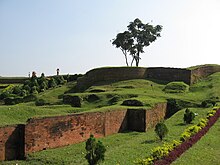


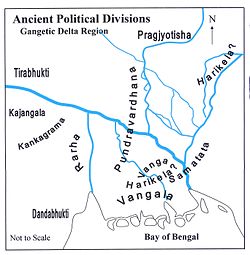
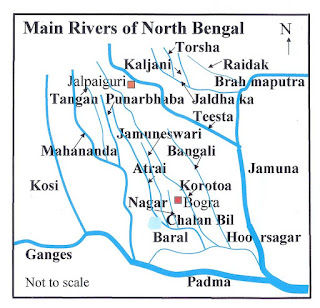















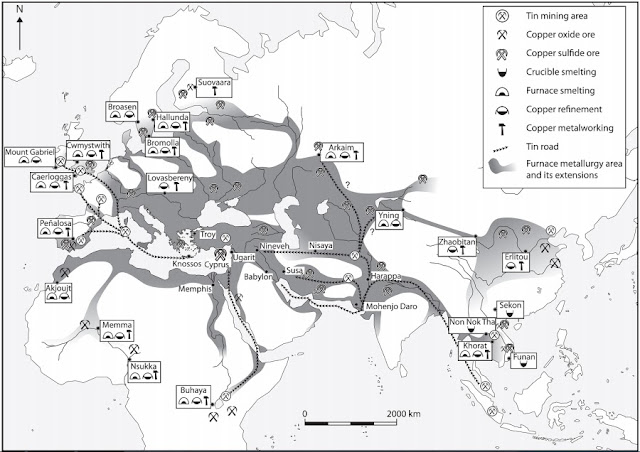


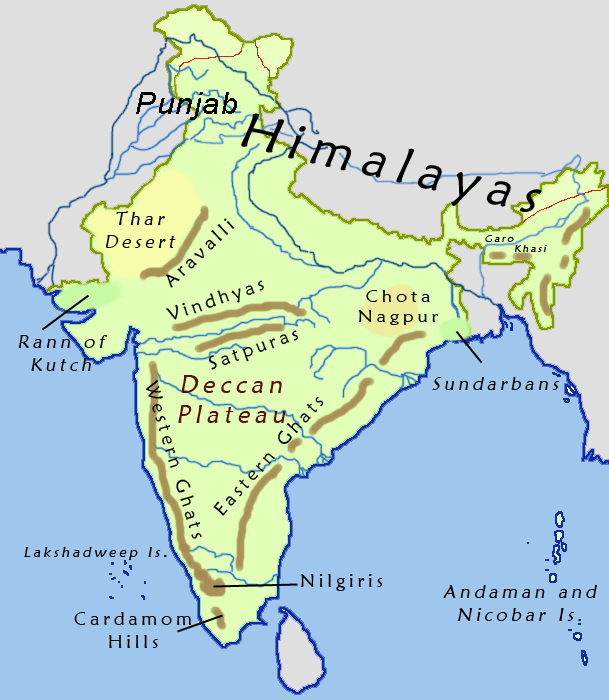
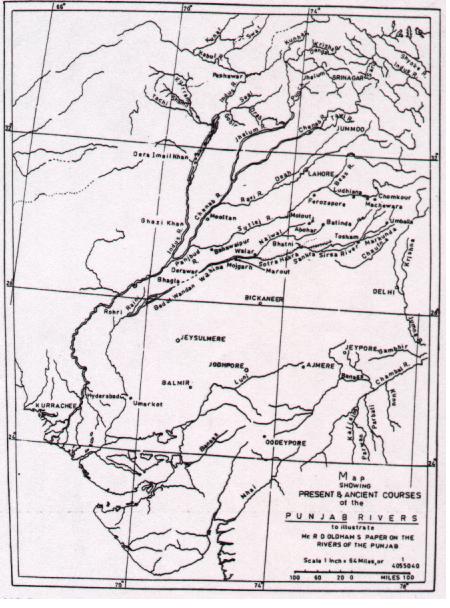



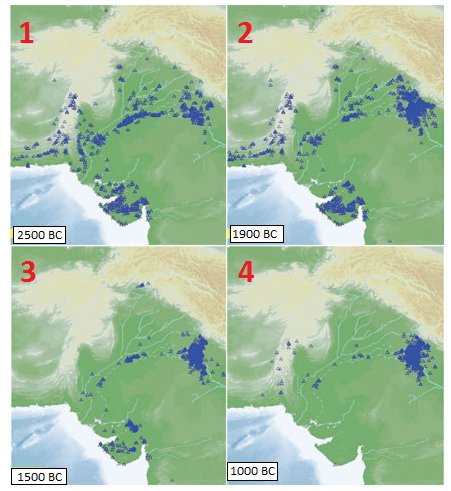










 Bronze mirror. Rakhigarhi. Hieroglyph:
Bronze mirror. Rakhigarhi. Hieroglyph: 









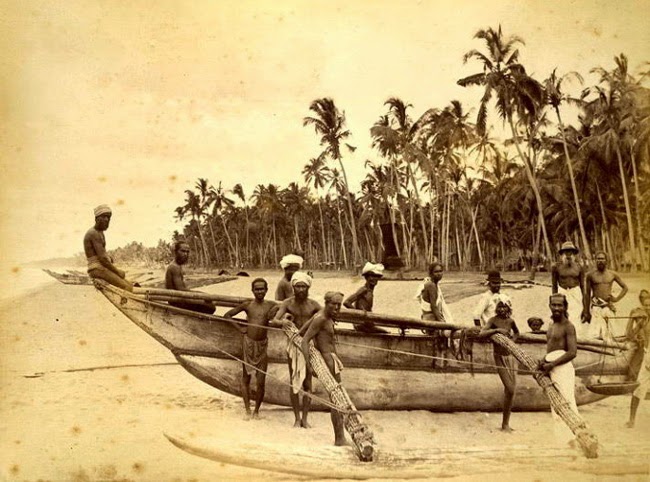

 Ancient Polynesian catamaran (developed as early as 1500 BCE)
Ancient Polynesian catamaran (developed as early as 1500 BCE)




 un système de tenons ressemblant à des languettes de bois prenant place dans des mortaises. Les tenons mesurent 7 cm de largeur, 2 cm d’épaisseur et la profondeur des mortaises peut atteindre 15 cm.
un système de tenons ressemblant à des languettes de bois prenant place dans des mortaises. Les tenons mesurent 7 cm de largeur, 2 cm d’épaisseur et la profondeur des mortaises peut atteindre 15 cm.

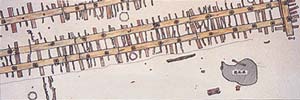


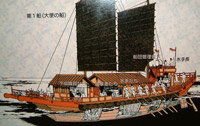
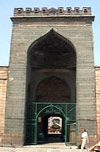
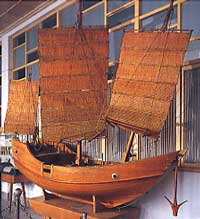
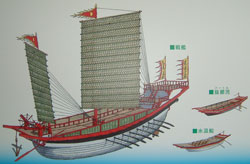

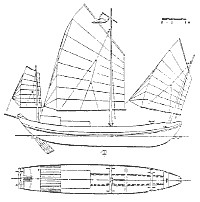
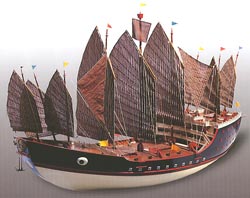

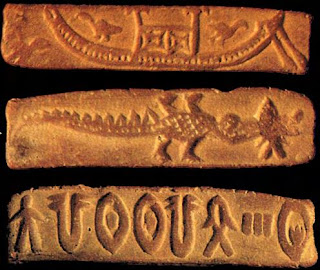

































































































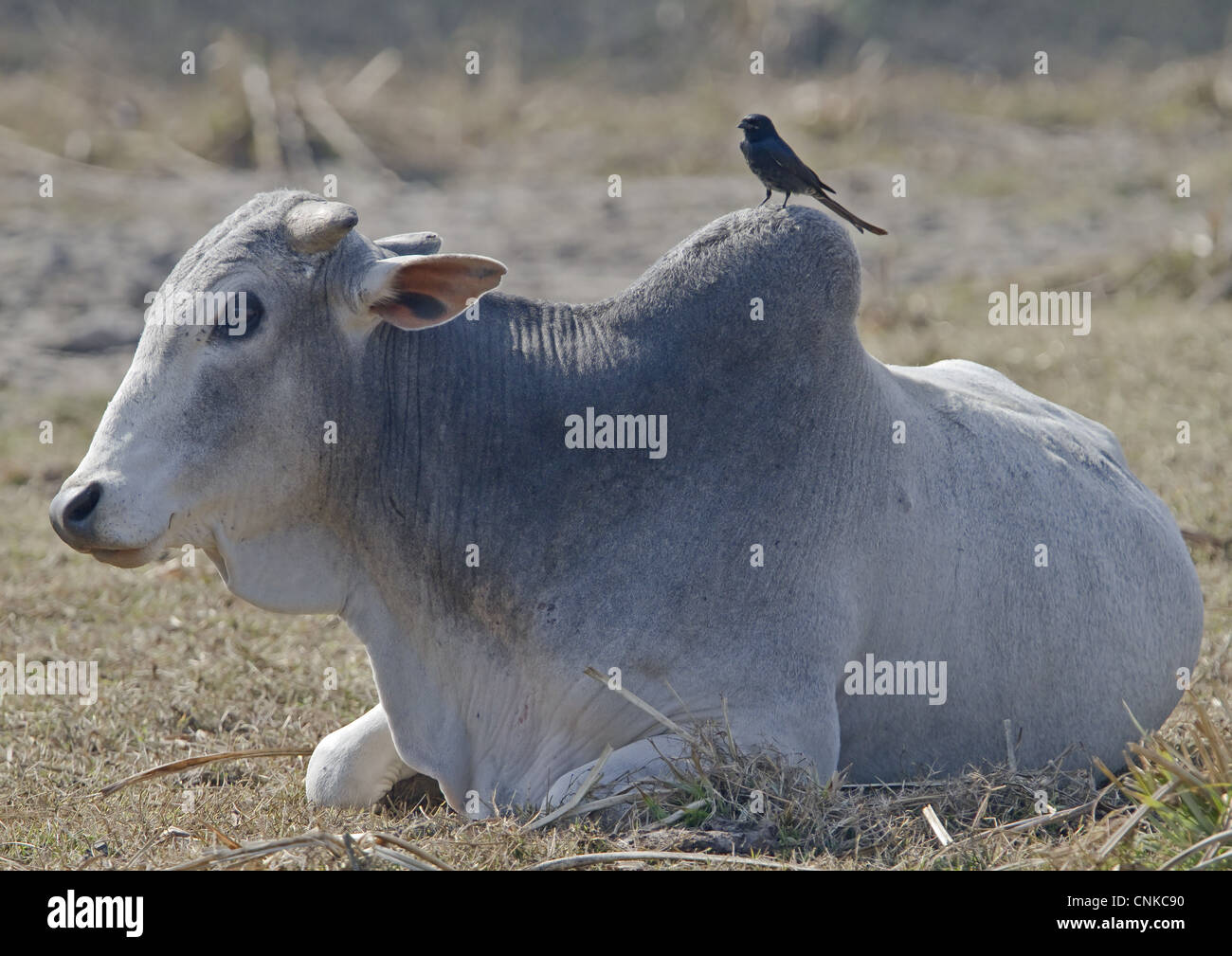








































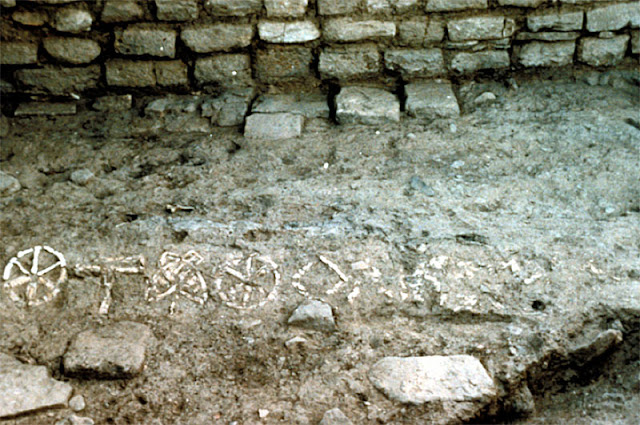





















































 m0491
m0491

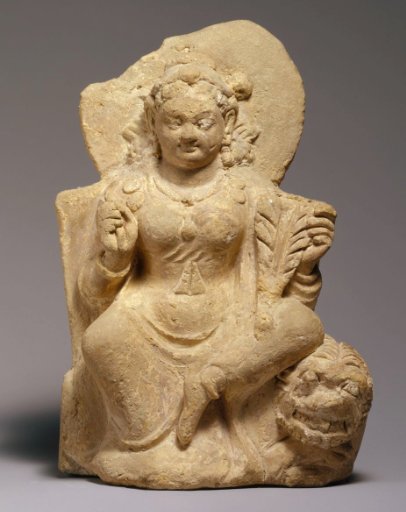





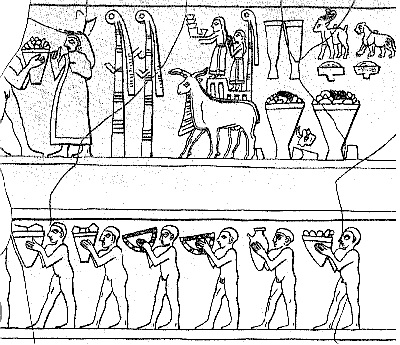


 Representation of Shamash from the
Representation of Shamash from the 
 Cylinder seal with kneeling nude heroes, ca. 2220–2159 b.c.; Akkadian Mesopotamia Red jasper H. 1 1/8 in. (2.8 cm), Diam. 5/8 in. (1.6 cm) Metropolitan Museum of Art - USA.
Cylinder seal with kneeling nude heroes, ca. 2220–2159 b.c.; Akkadian Mesopotamia Red jasper H. 1 1/8 in. (2.8 cm), Diam. 5/8 in. (1.6 cm) Metropolitan Museum of Art - USA.  The cylinder seal signifies -- in an extraordinarily crisp hypertext, within limited writing space-- Indus script proclamations of iron, copper, gold-smithy, mint-work. ḍhangar bhaṭa पेढी 'blacksmith furnace shop' kamar कारणी arka lokhaṇḍa aya kammaṭa 'blacksmith supercargo, copper, gold, metal implements, mint' [কর্মকার ]
The cylinder seal signifies -- in an extraordinarily crisp hypertext, within limited writing space-- Indus script proclamations of iron, copper, gold-smithy, mint-work. ḍhangar bhaṭa पेढी 'blacksmith furnace shop' kamar कारणी arka lokhaṇḍa aya kammaṭa 'blacksmith supercargo, copper, gold, metal implements, mint' [কর্মকার ] 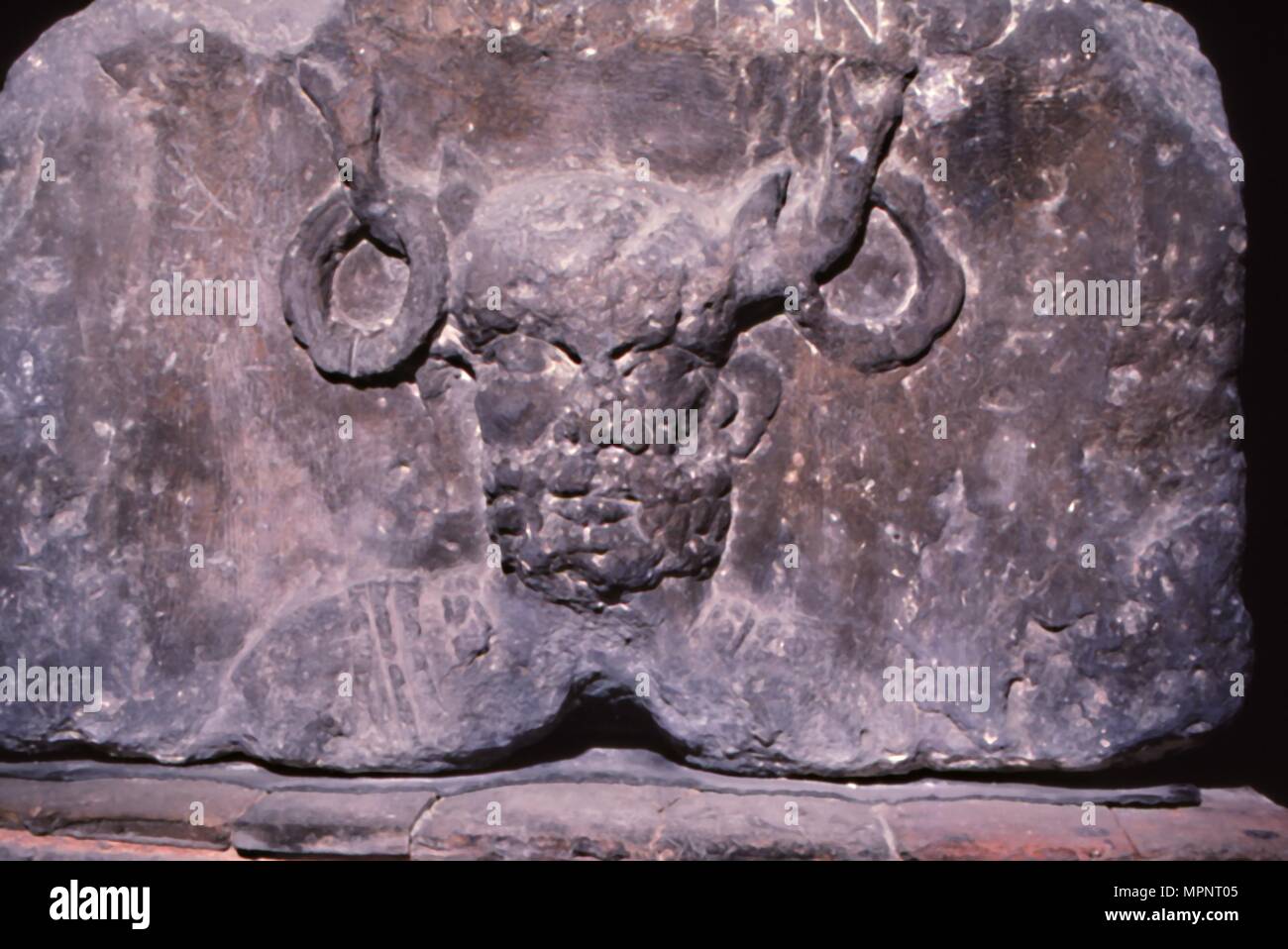
 Cernunnos. Twigs as horns with rings.
Cernunnos. Twigs as horns with rings. 






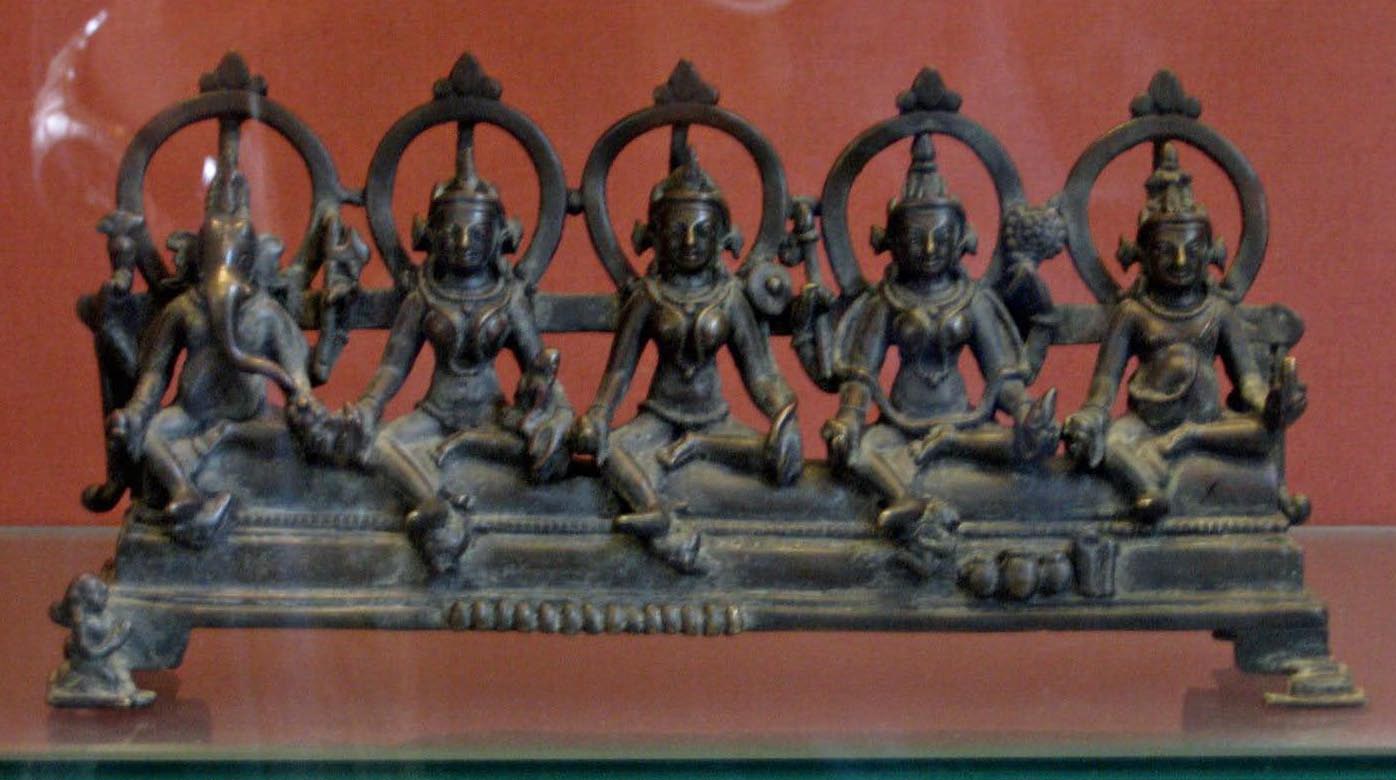
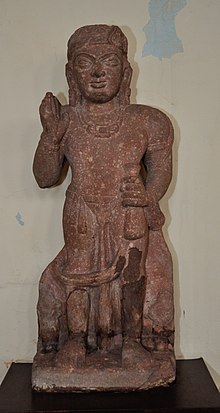
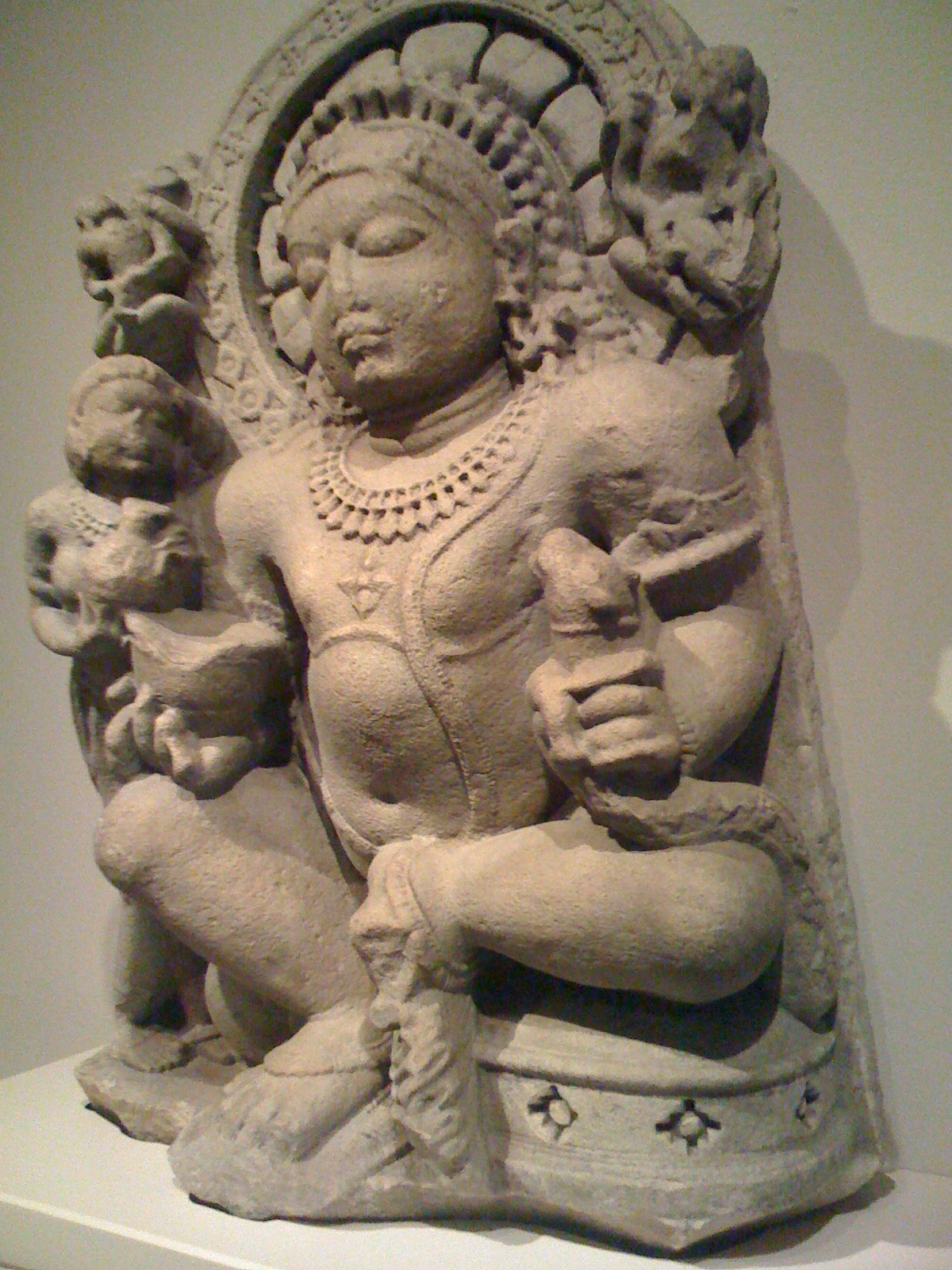





















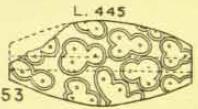
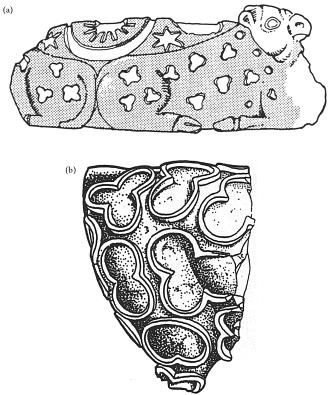
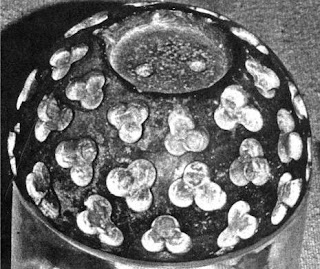
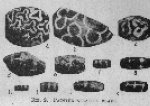

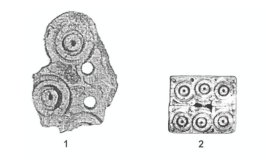 Artifacts from Jiroft.
Artifacts from Jiroft.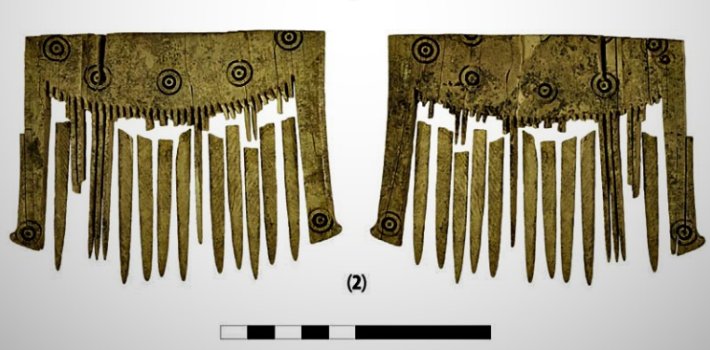
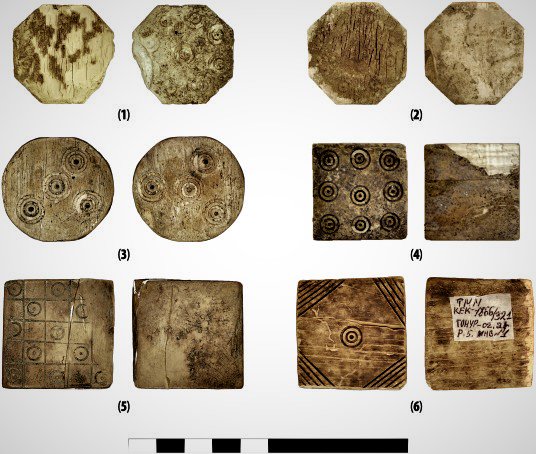
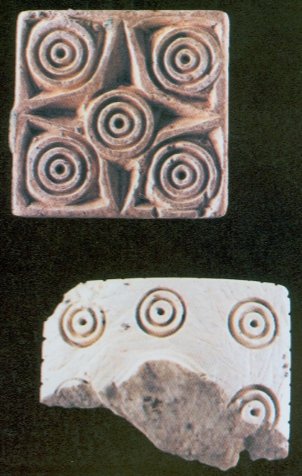
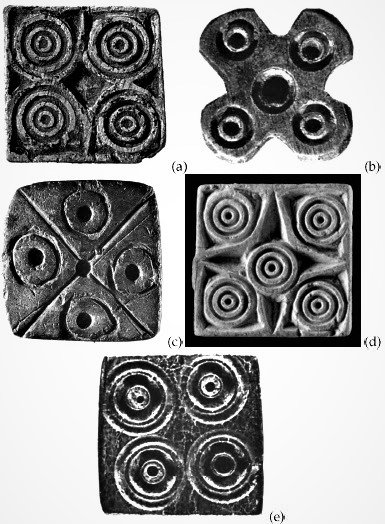
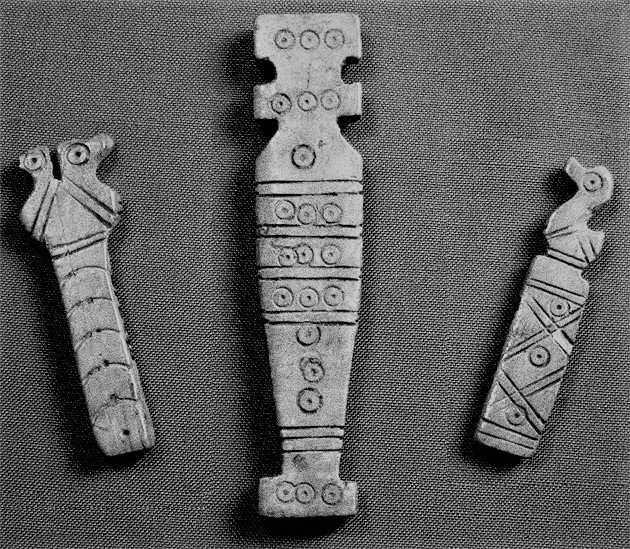
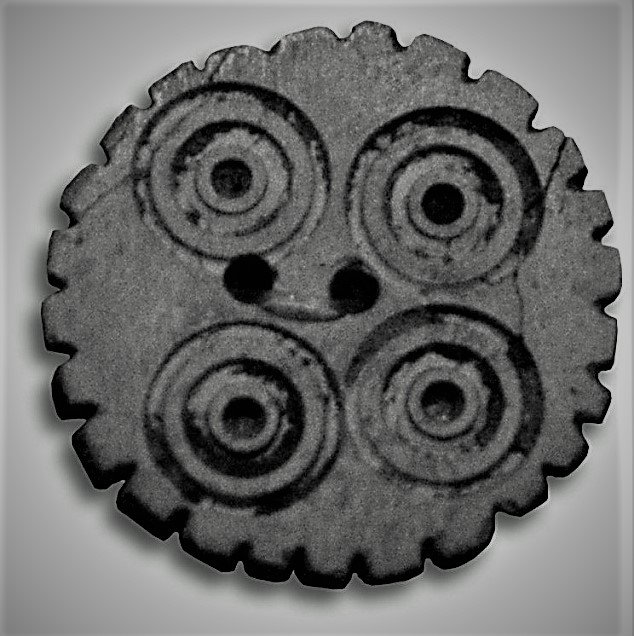

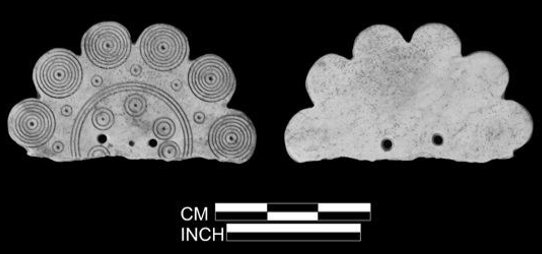


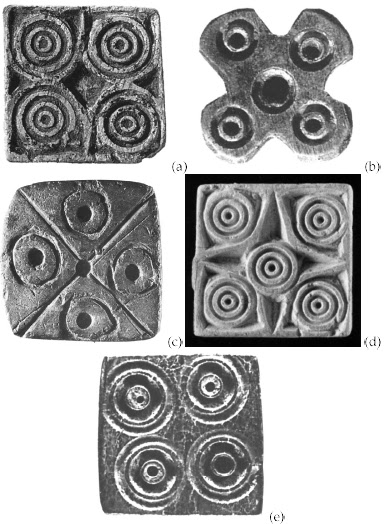
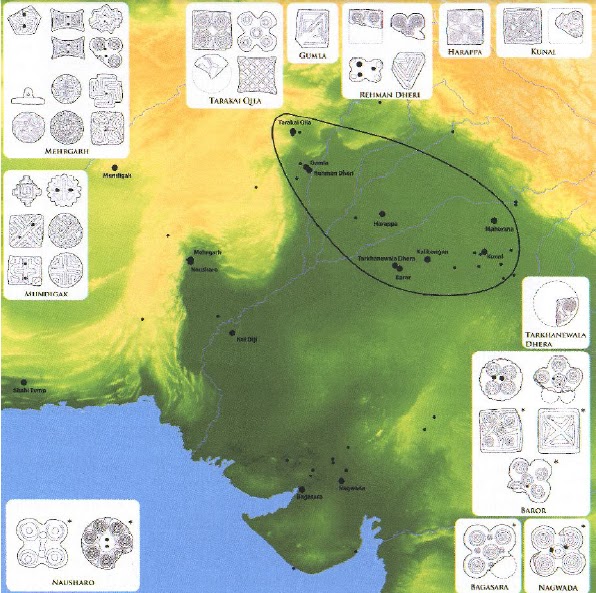




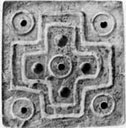







 Detail of terracotta bangle with red and white trefoil on a green background H98-3516/8667-01 from Trench 43).
Detail of terracotta bangle with red and white trefoil on a green background H98-3516/8667-01 from Trench 43). 
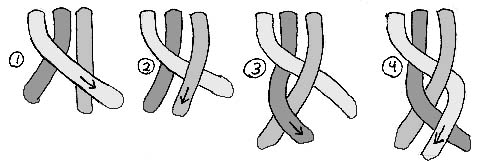




 Mohenjo-daro (Ashmolean Museum), Harappa dice.. दाय 1 [p=
Mohenjo-daro (Ashmolean Museum), Harappa dice.. दाय 1 [p= 





 "
"



































































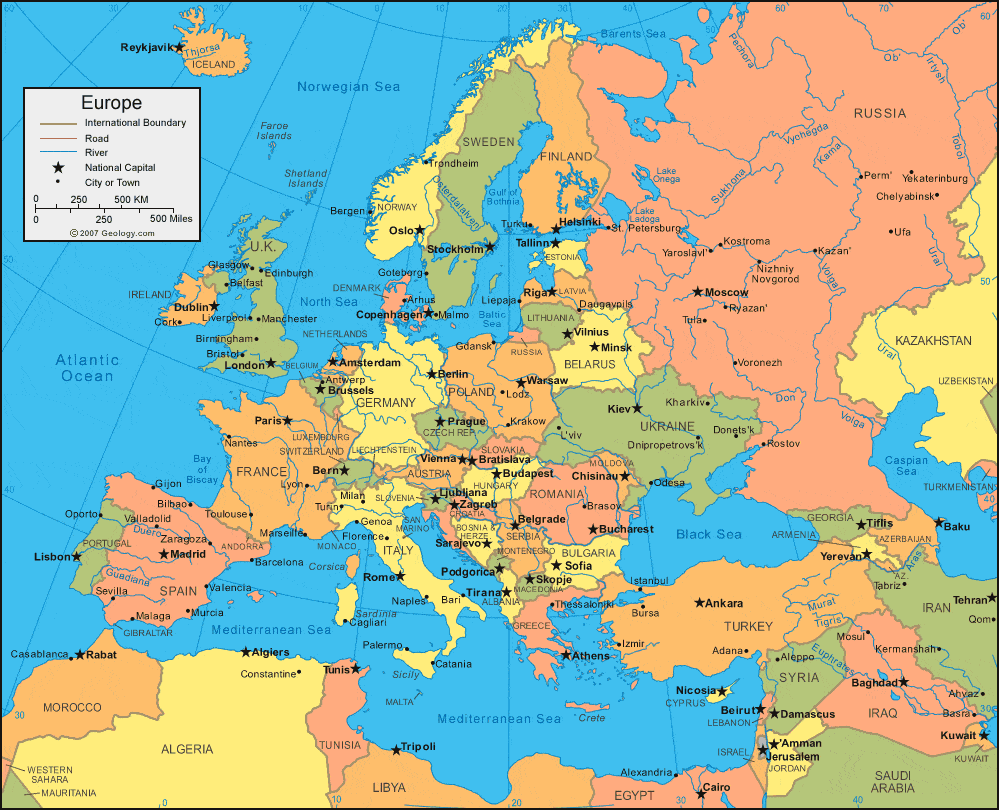































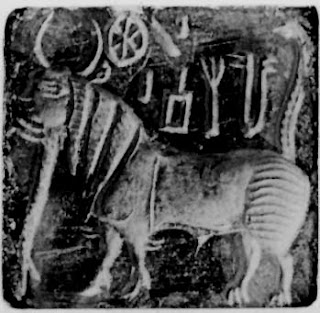








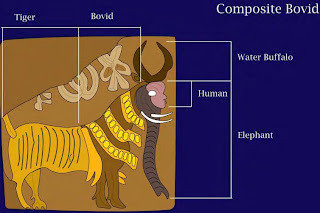
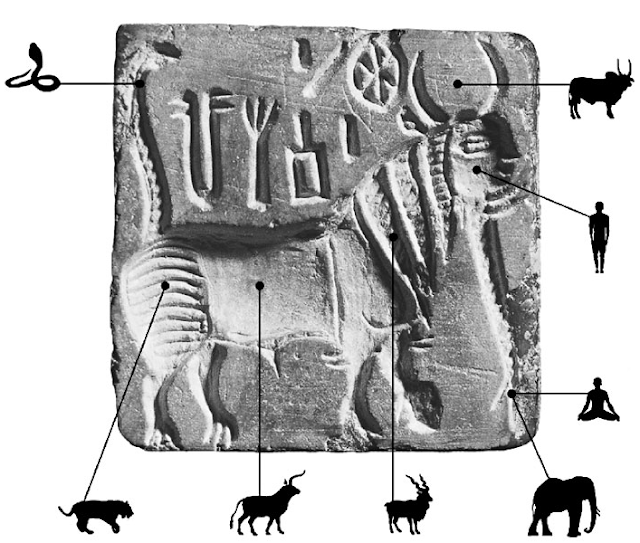










 m-1199
m-1199 


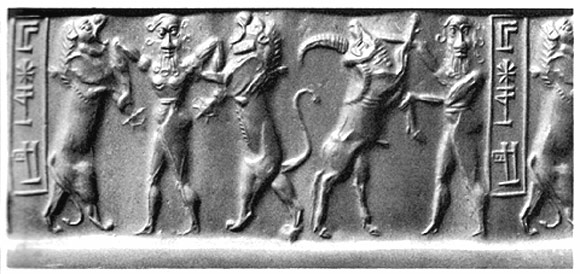
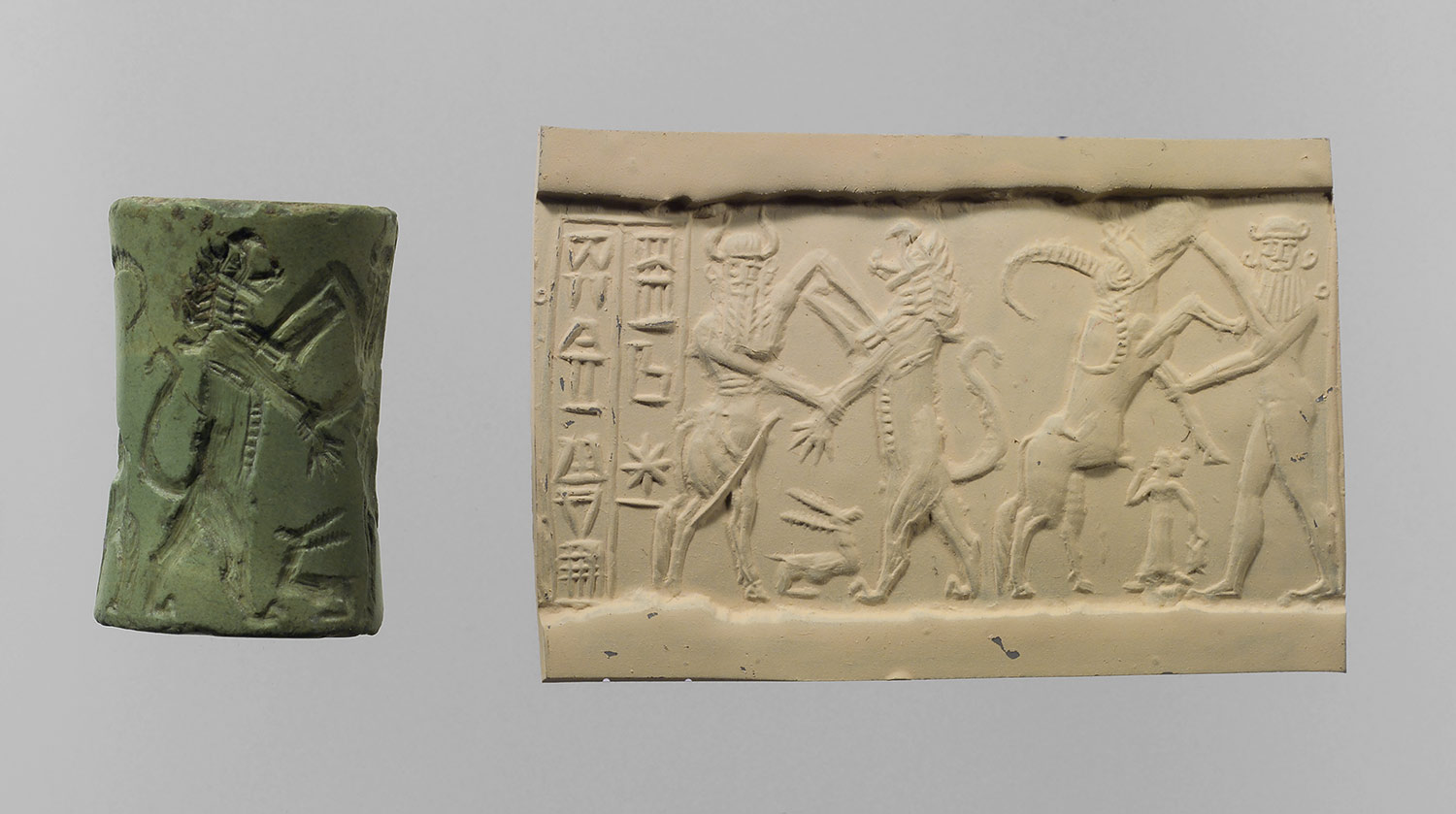
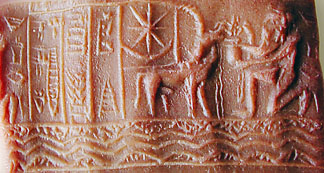














































 dhAv 'strand' rebus: dhAv 'dhAtu, mineral' tri-dhAtu 'three strands' rebus: 'three minerals'
dhAv 'strand' rebus: dhAv 'dhAtu, mineral' tri-dhAtu 'three strands' rebus: 'three minerals'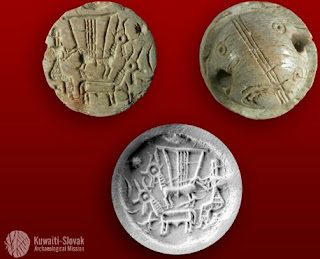

































 Location of Lagash.
Location of Lagash. 


 Santali glosses
Santali glosses



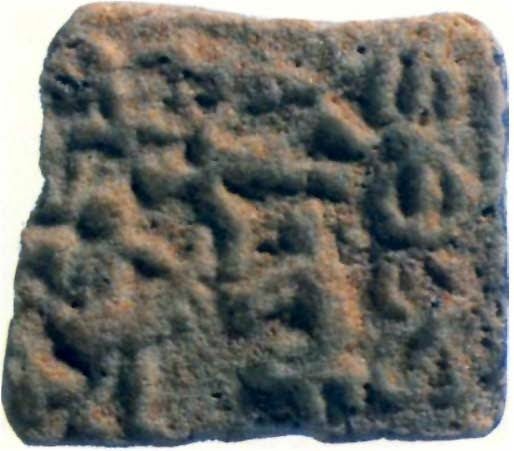


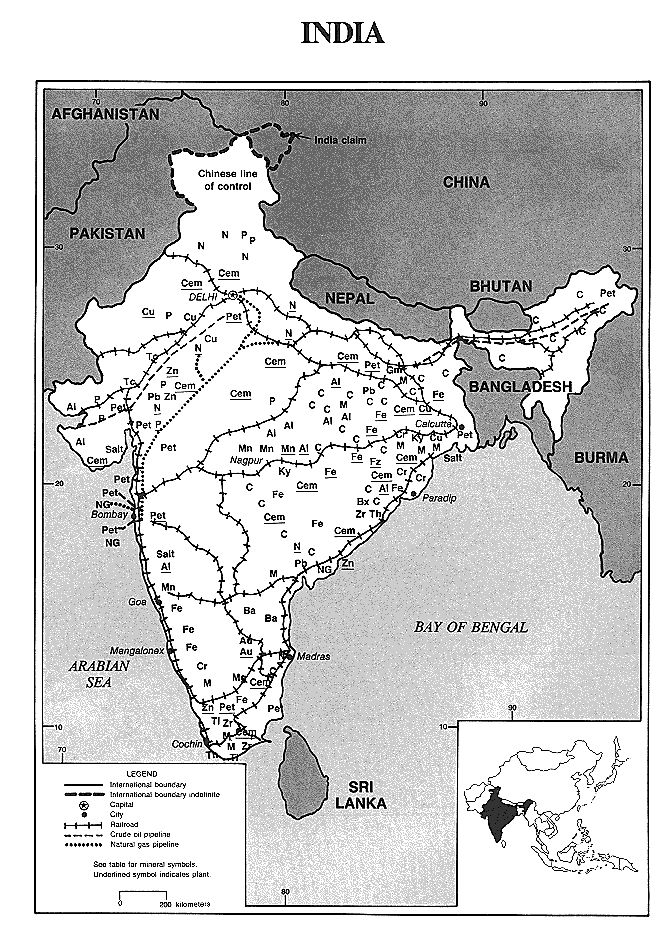



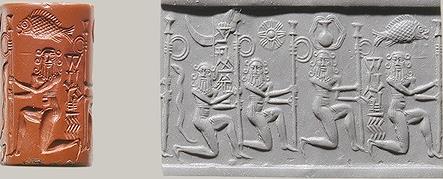
 .
.
